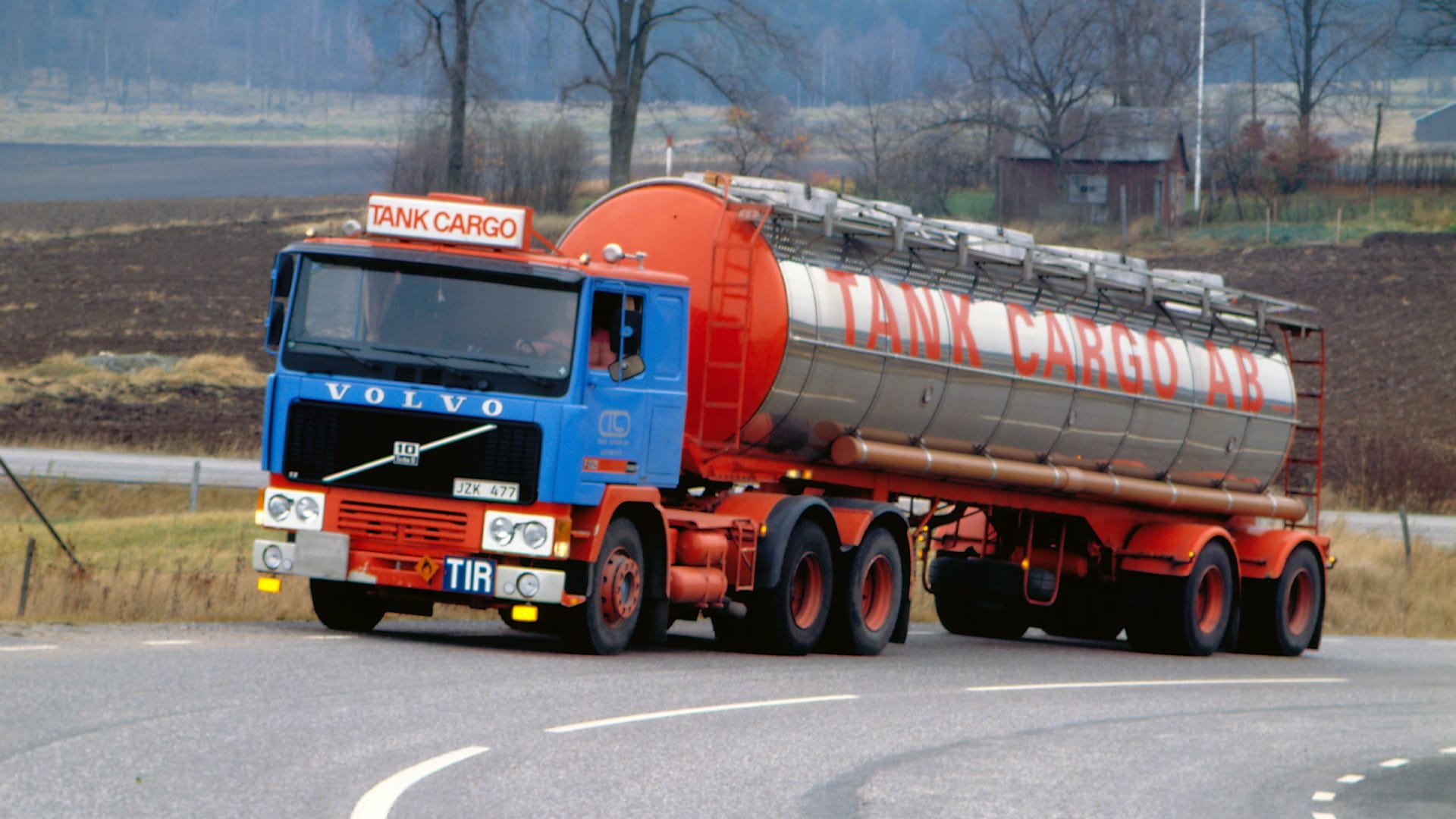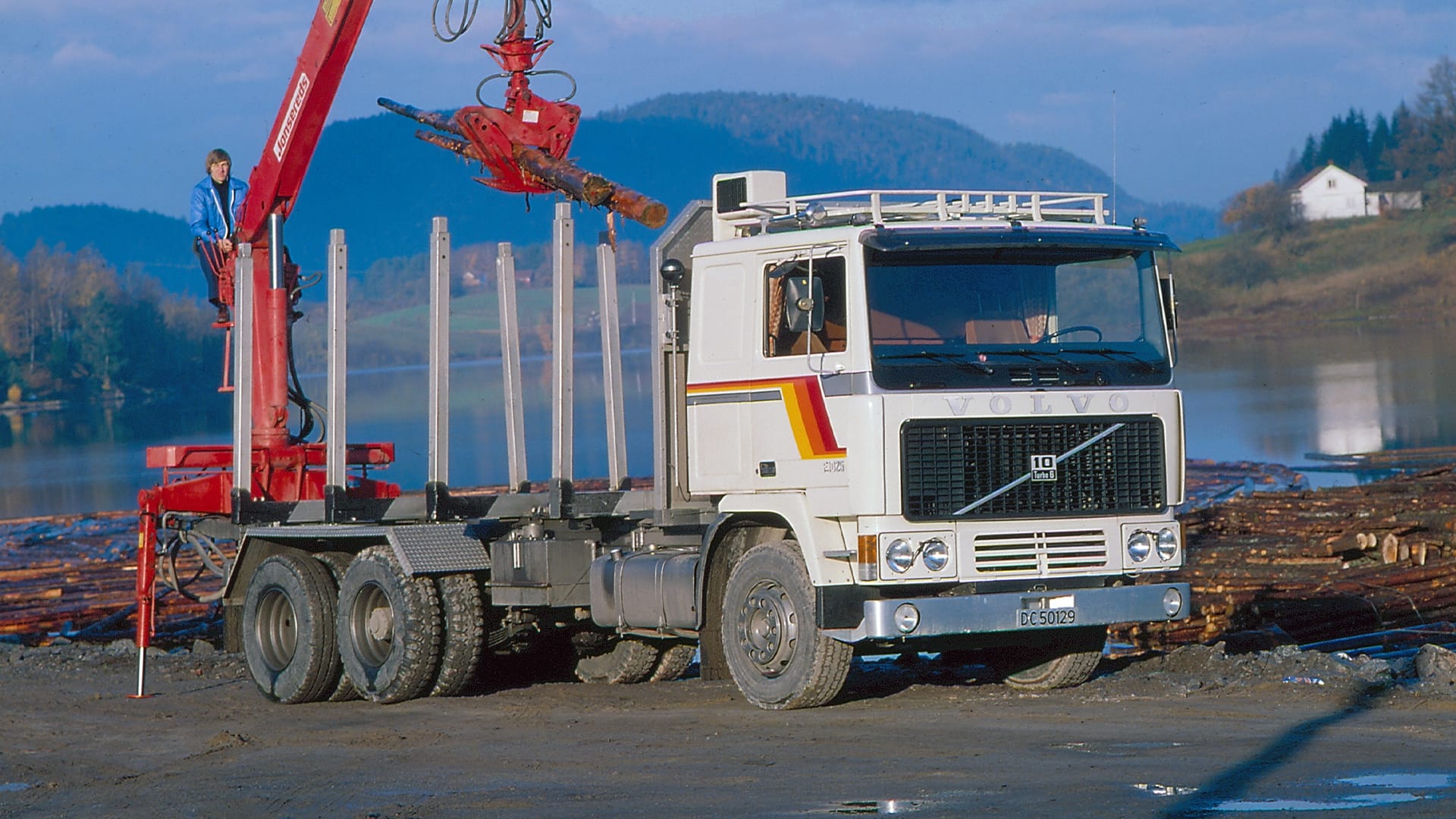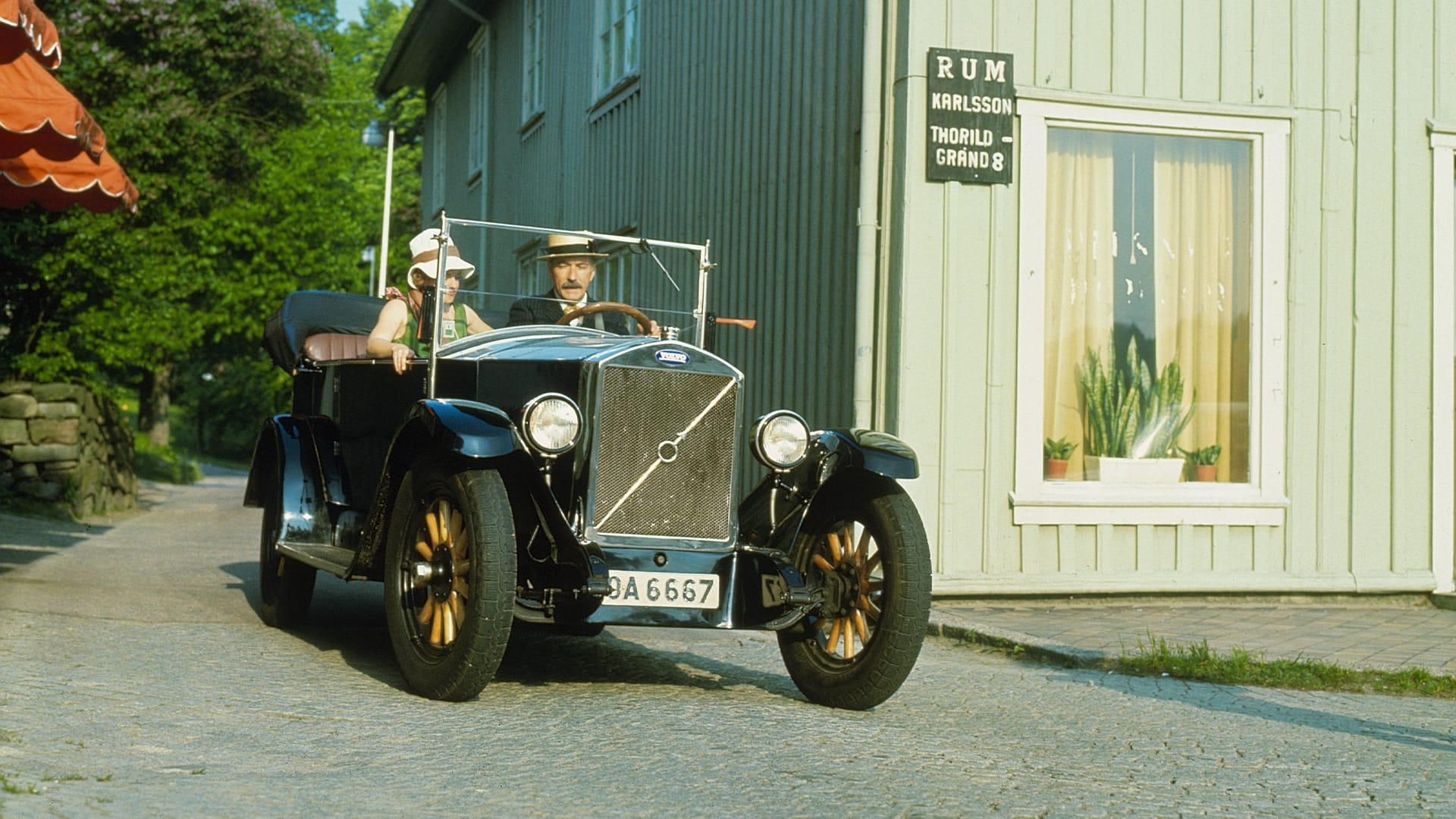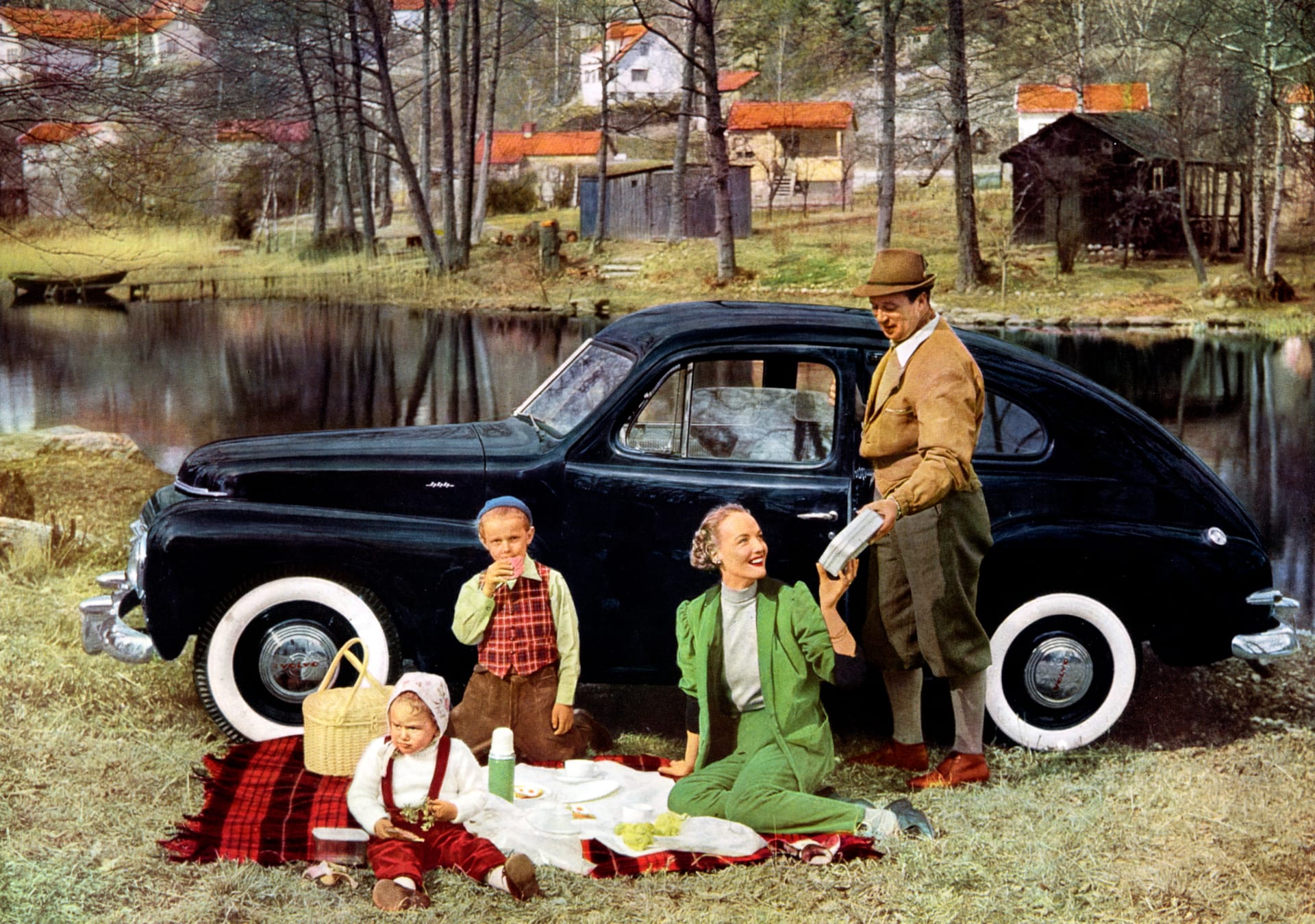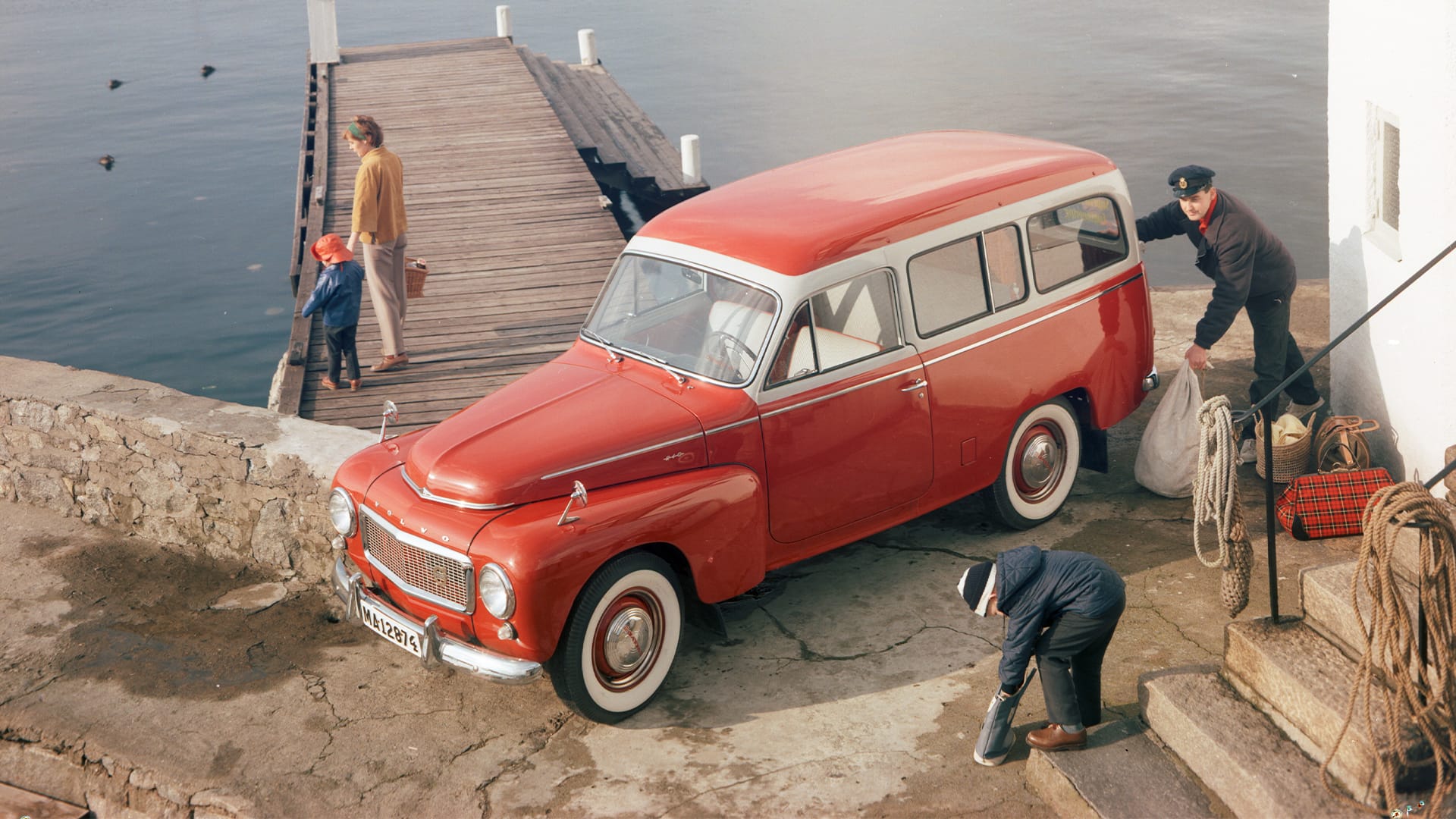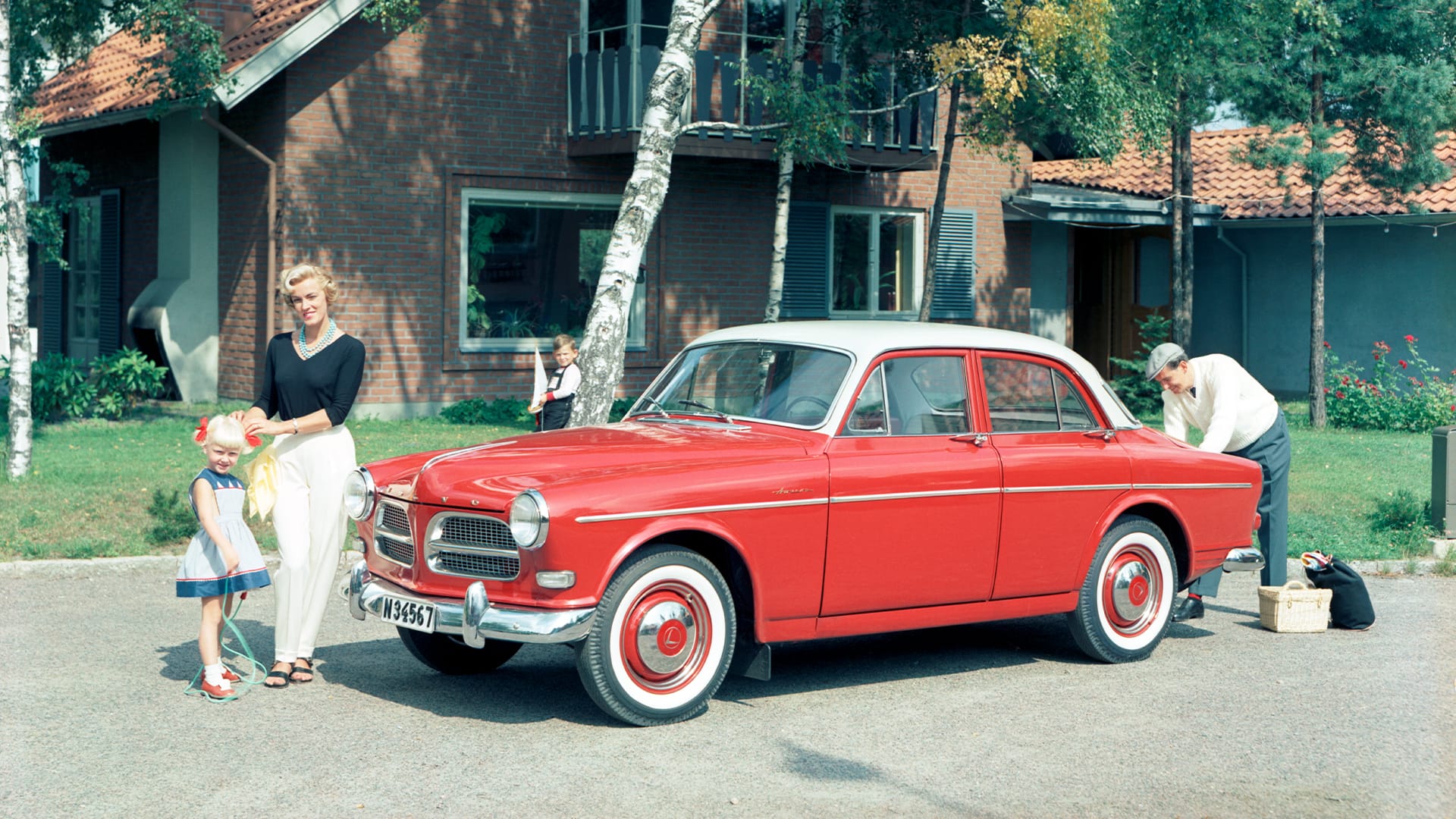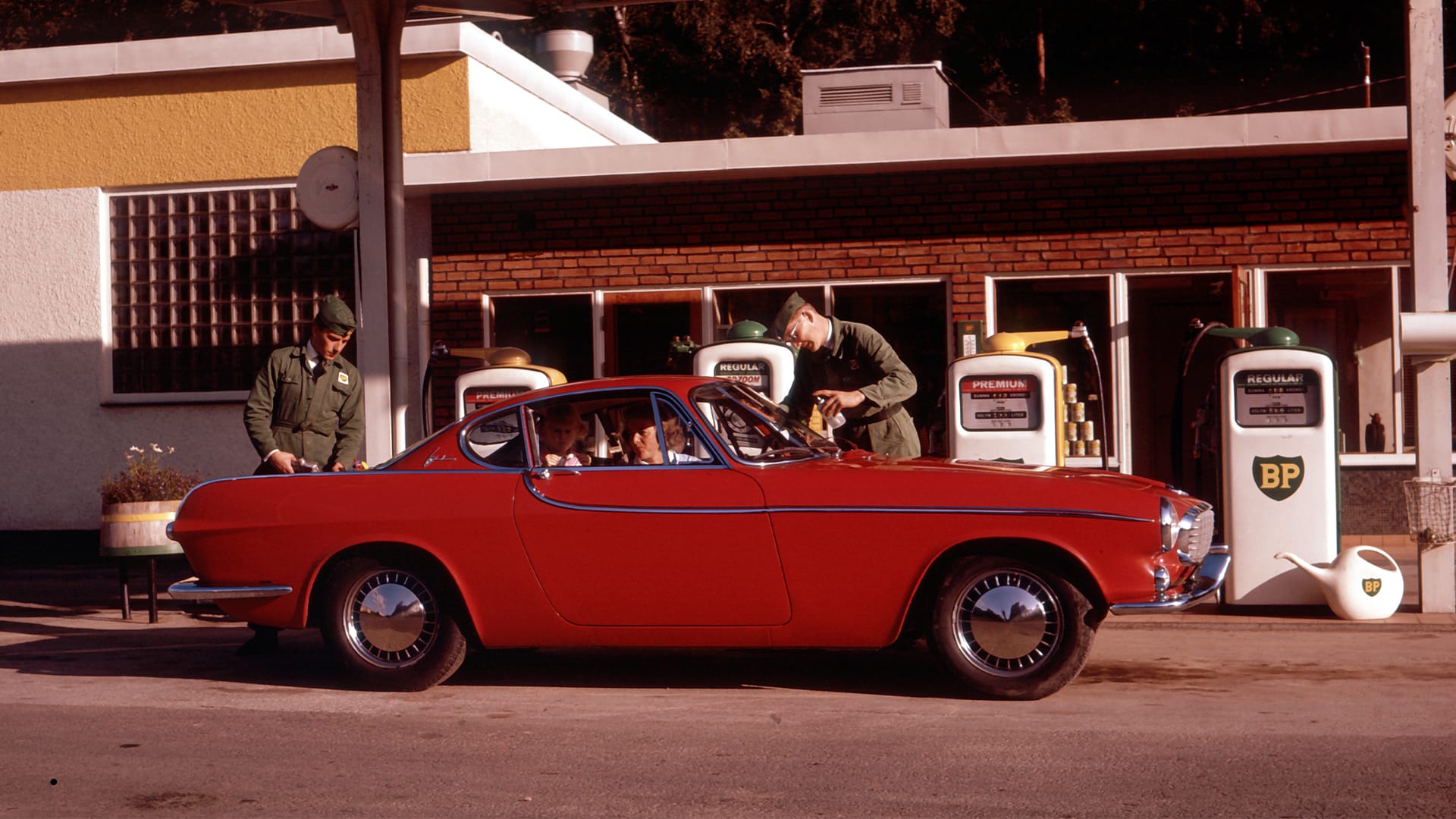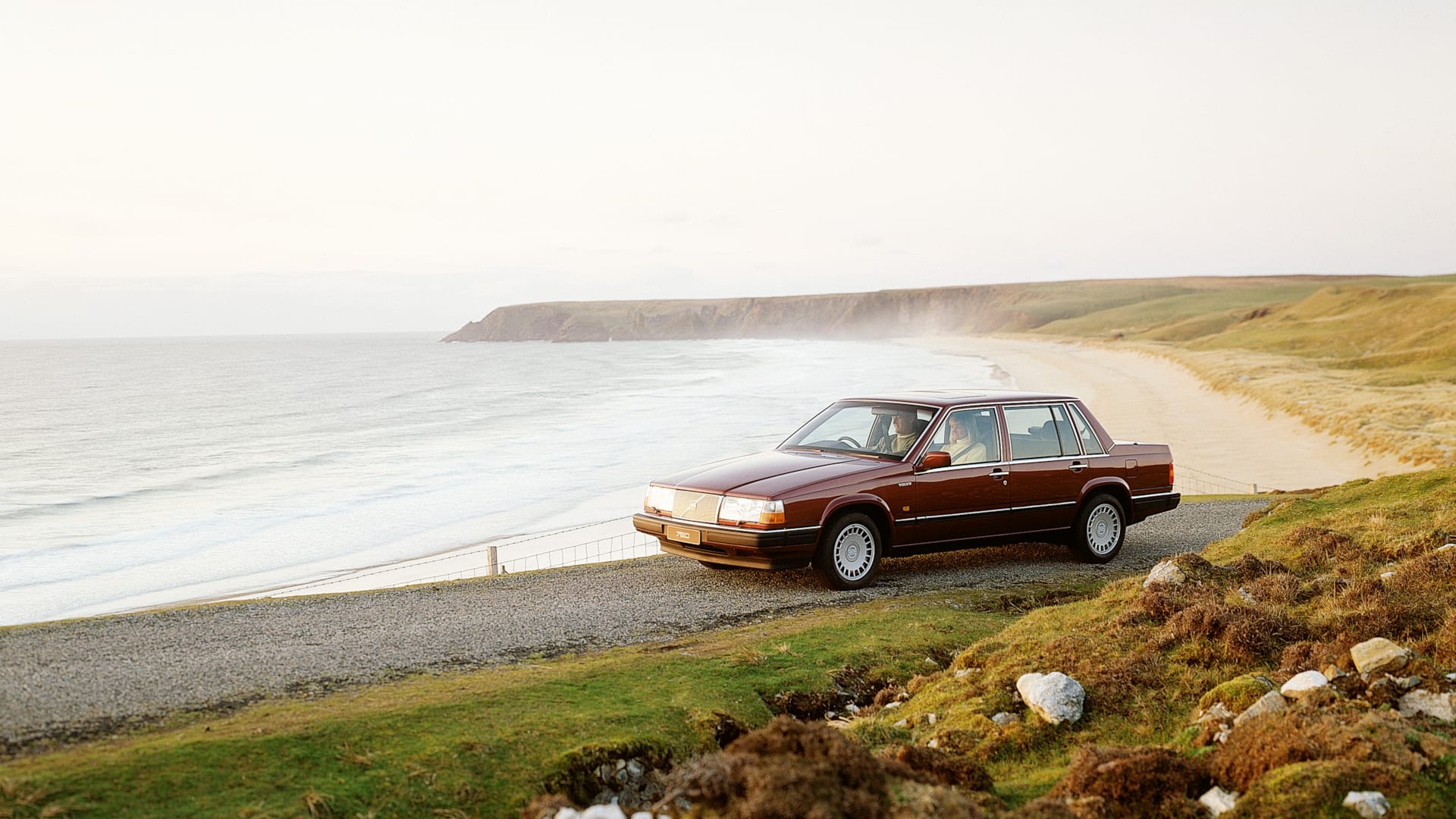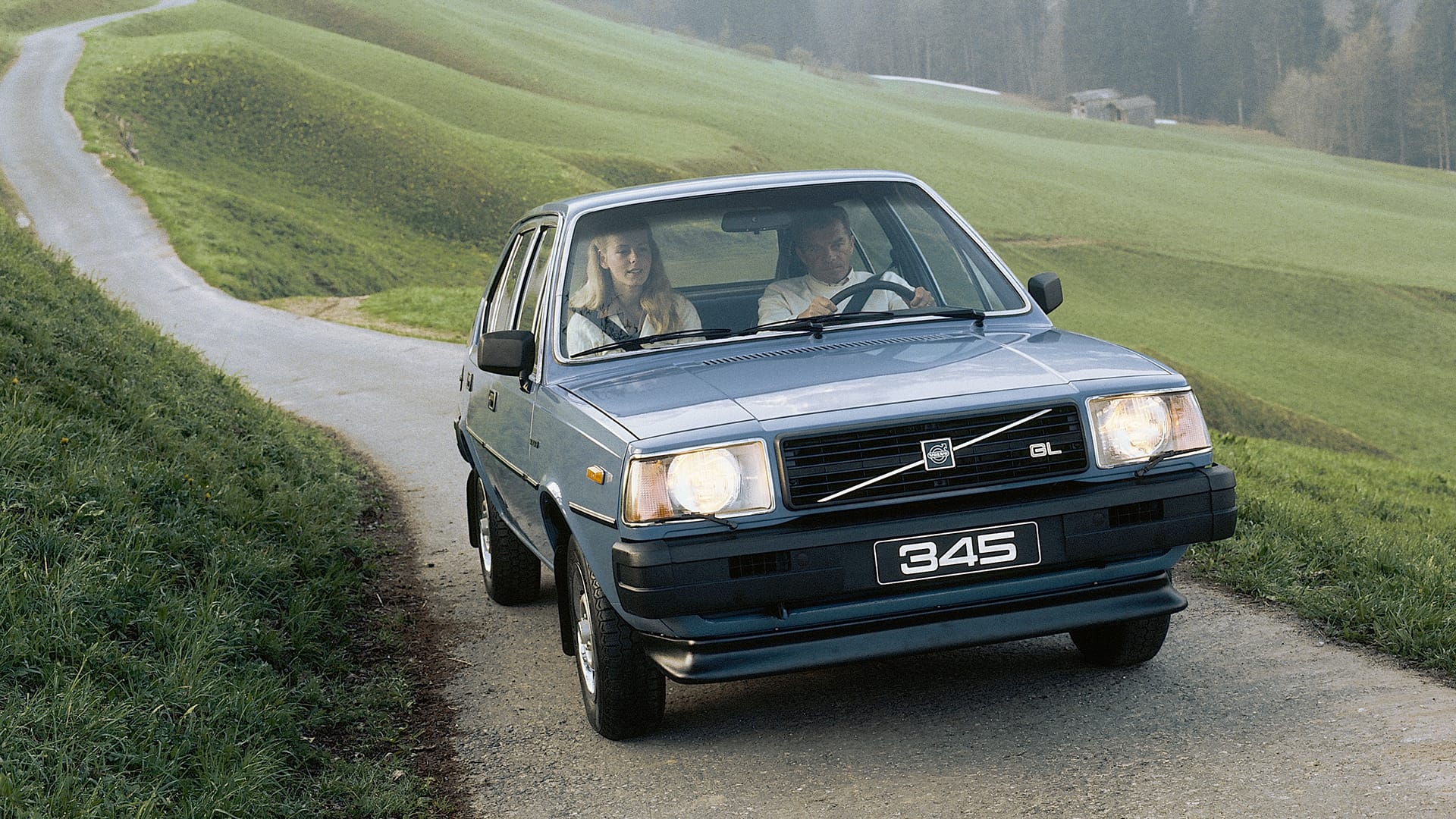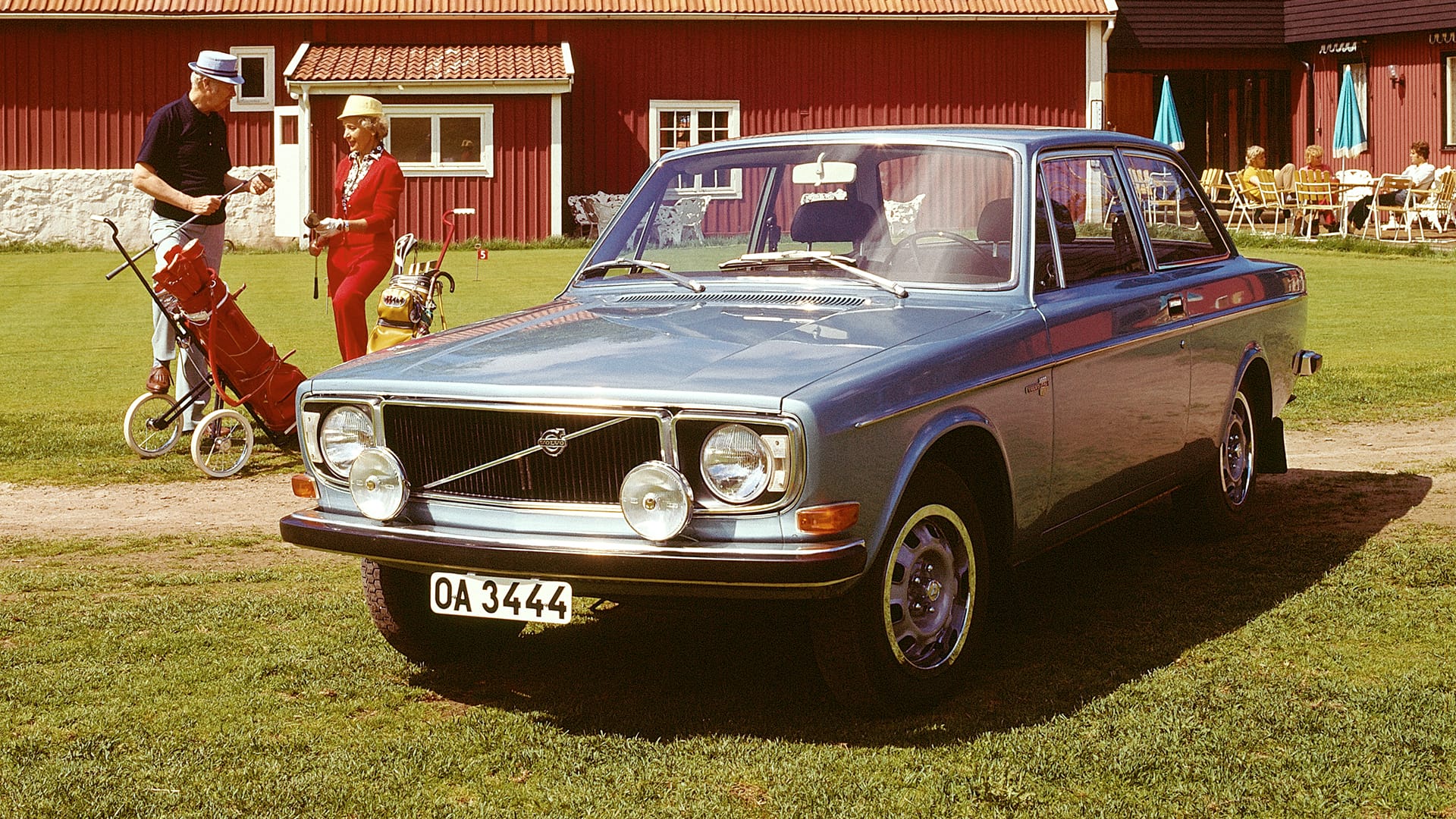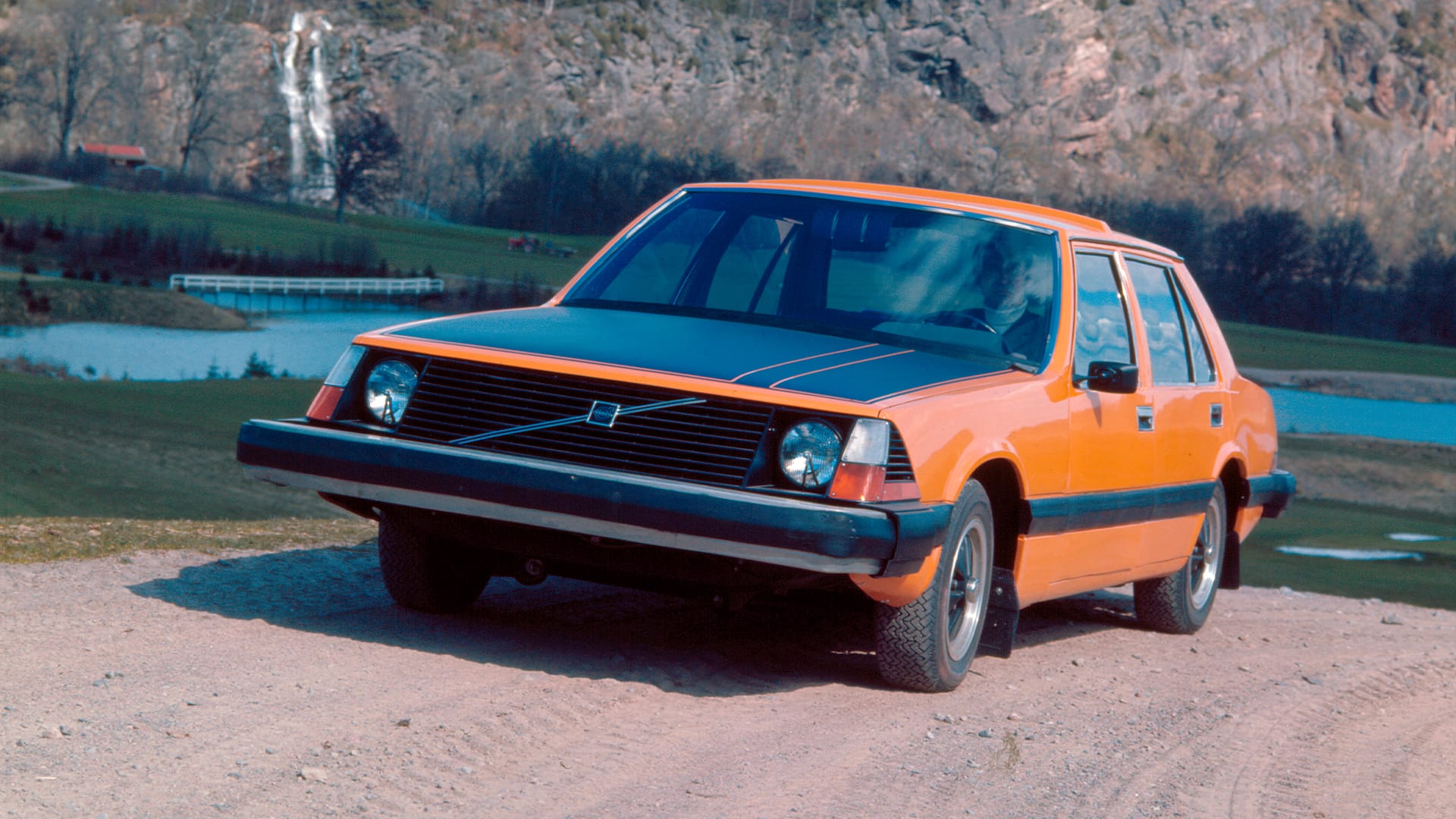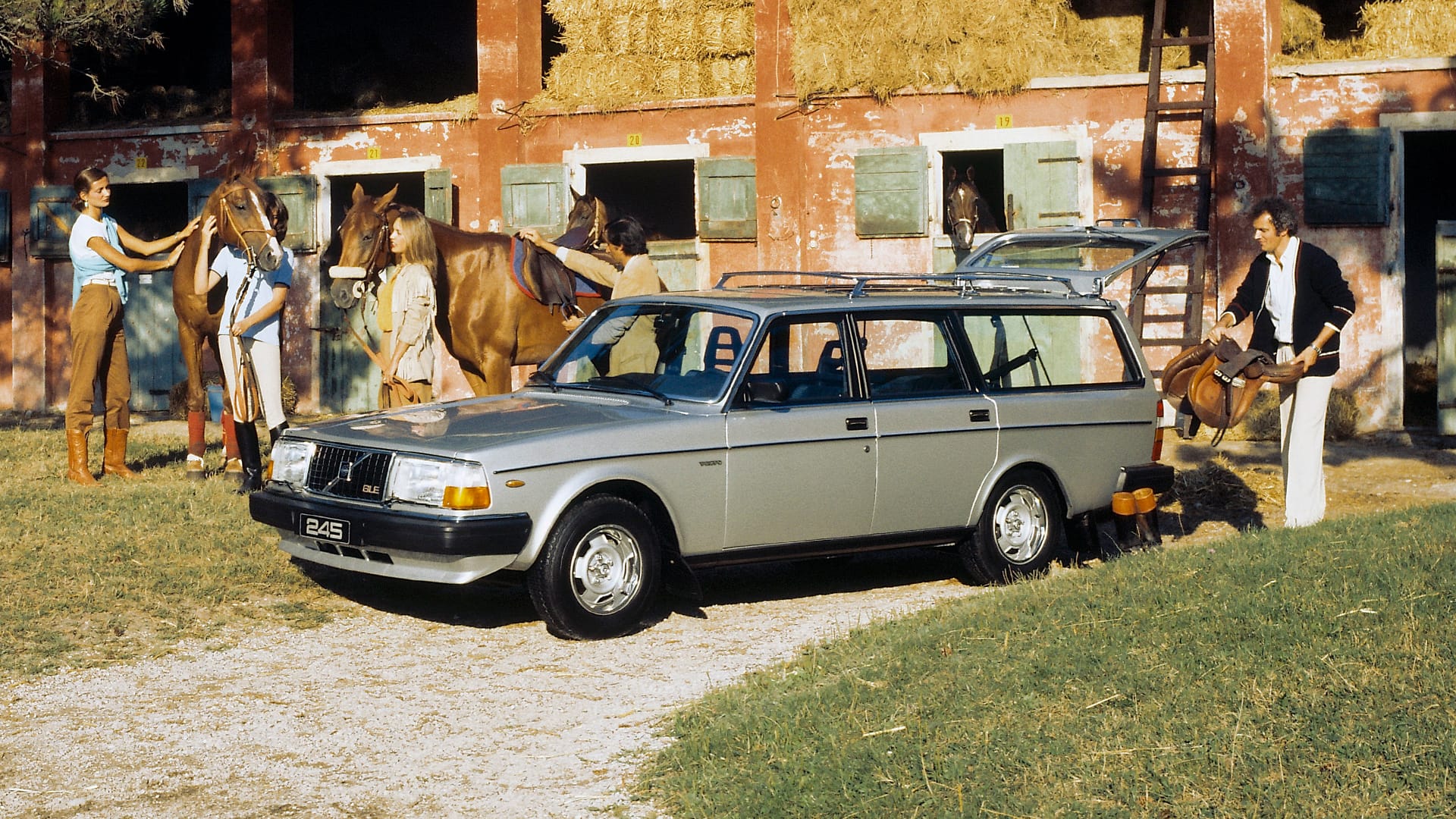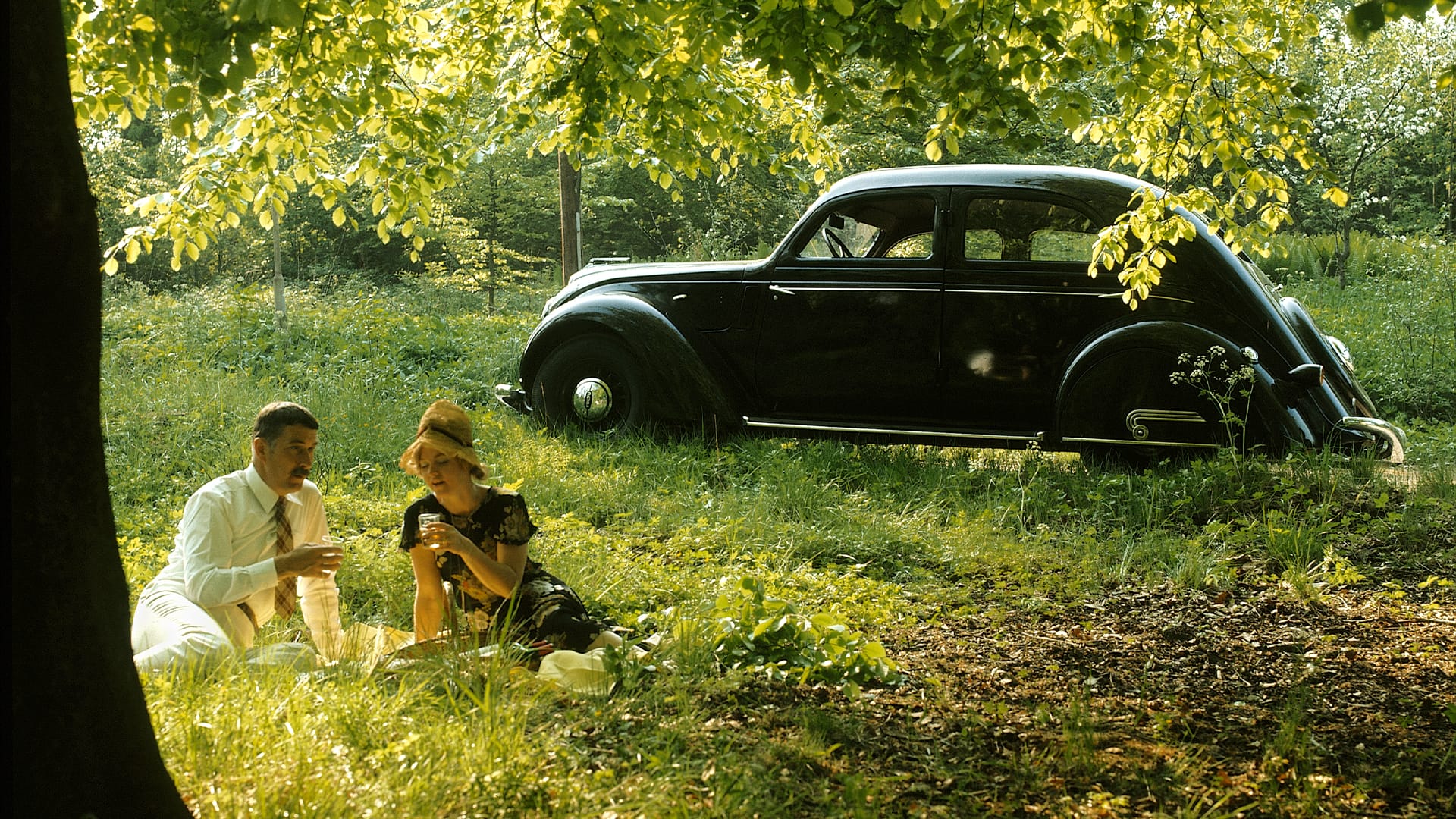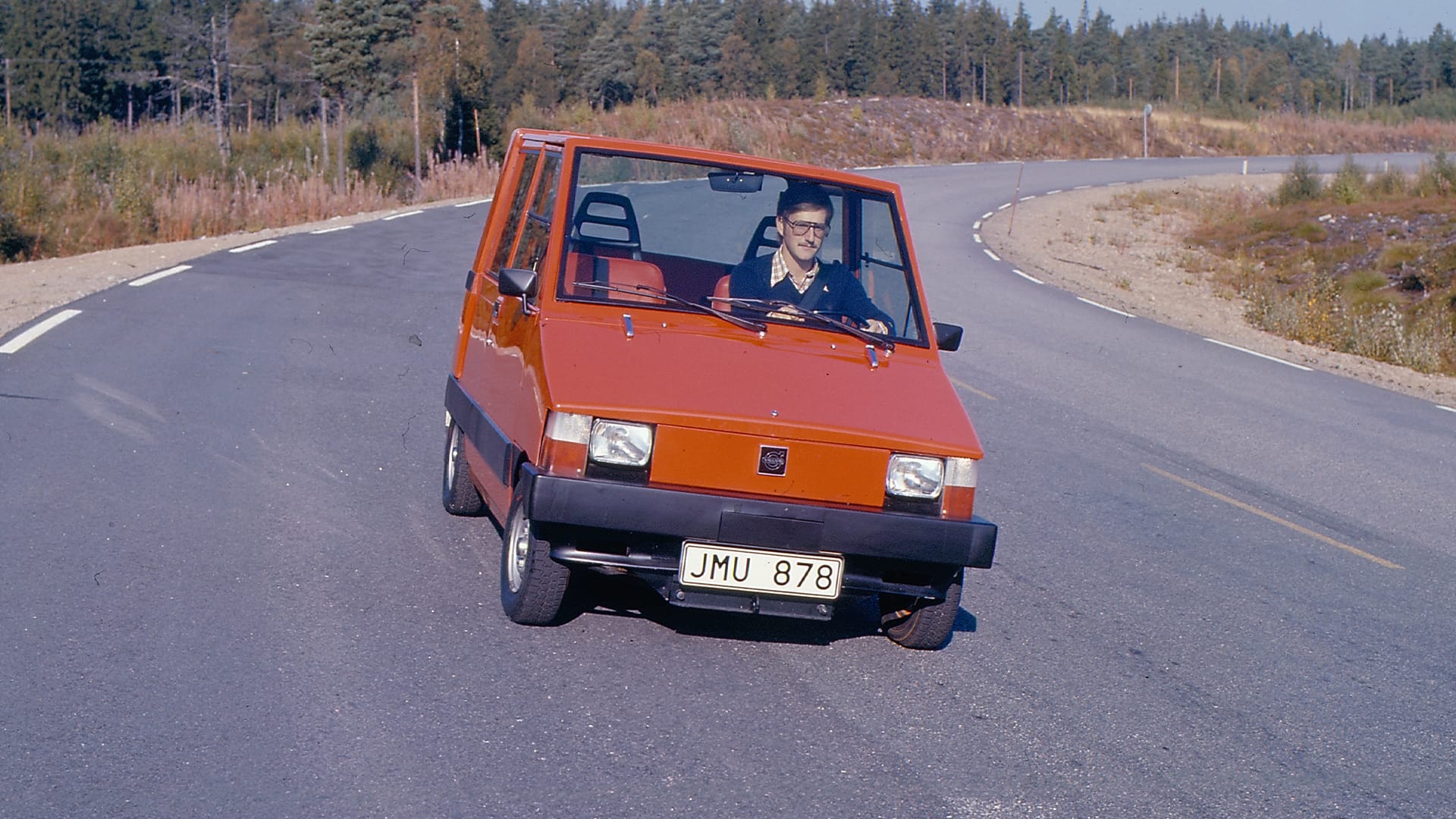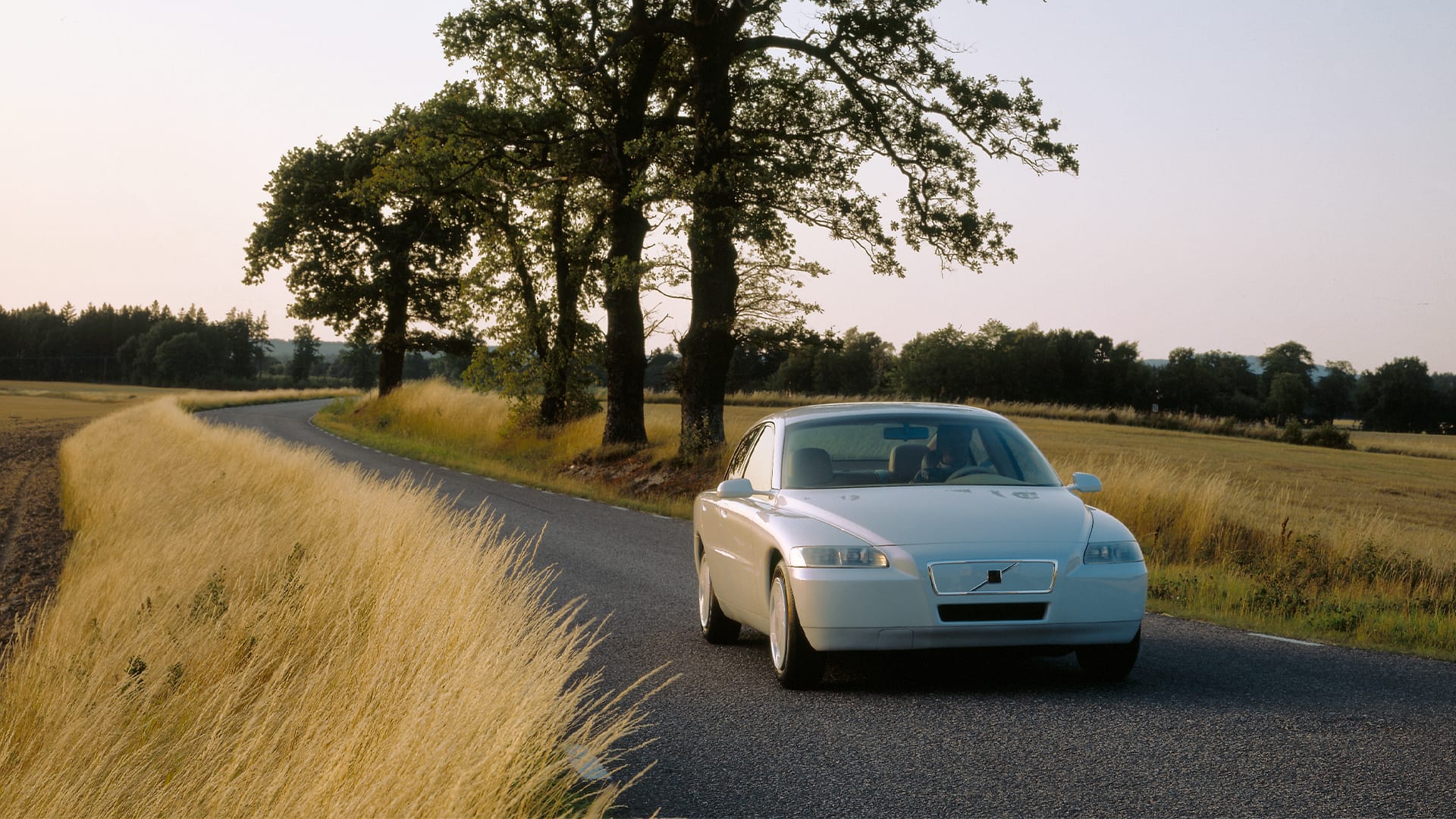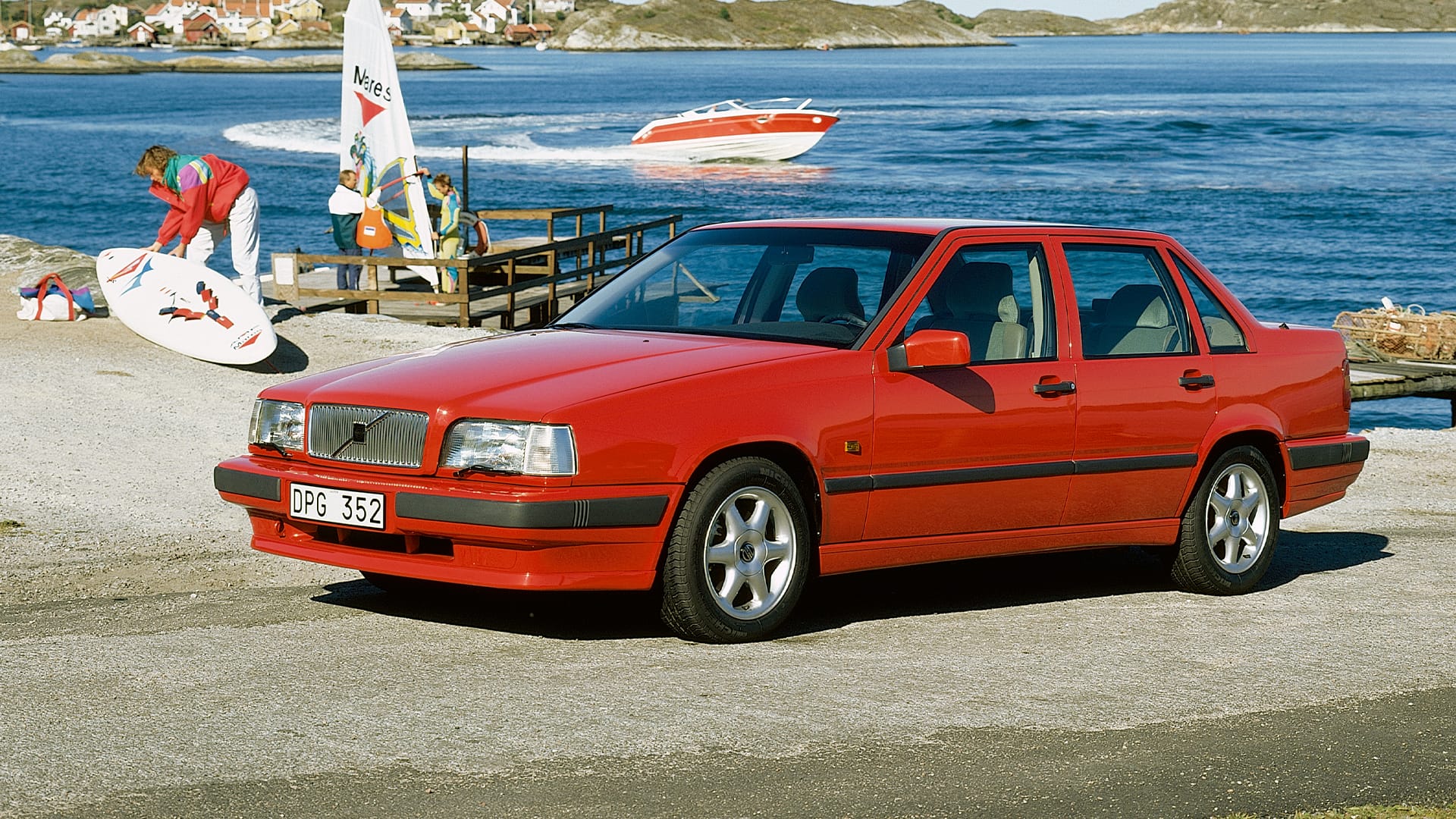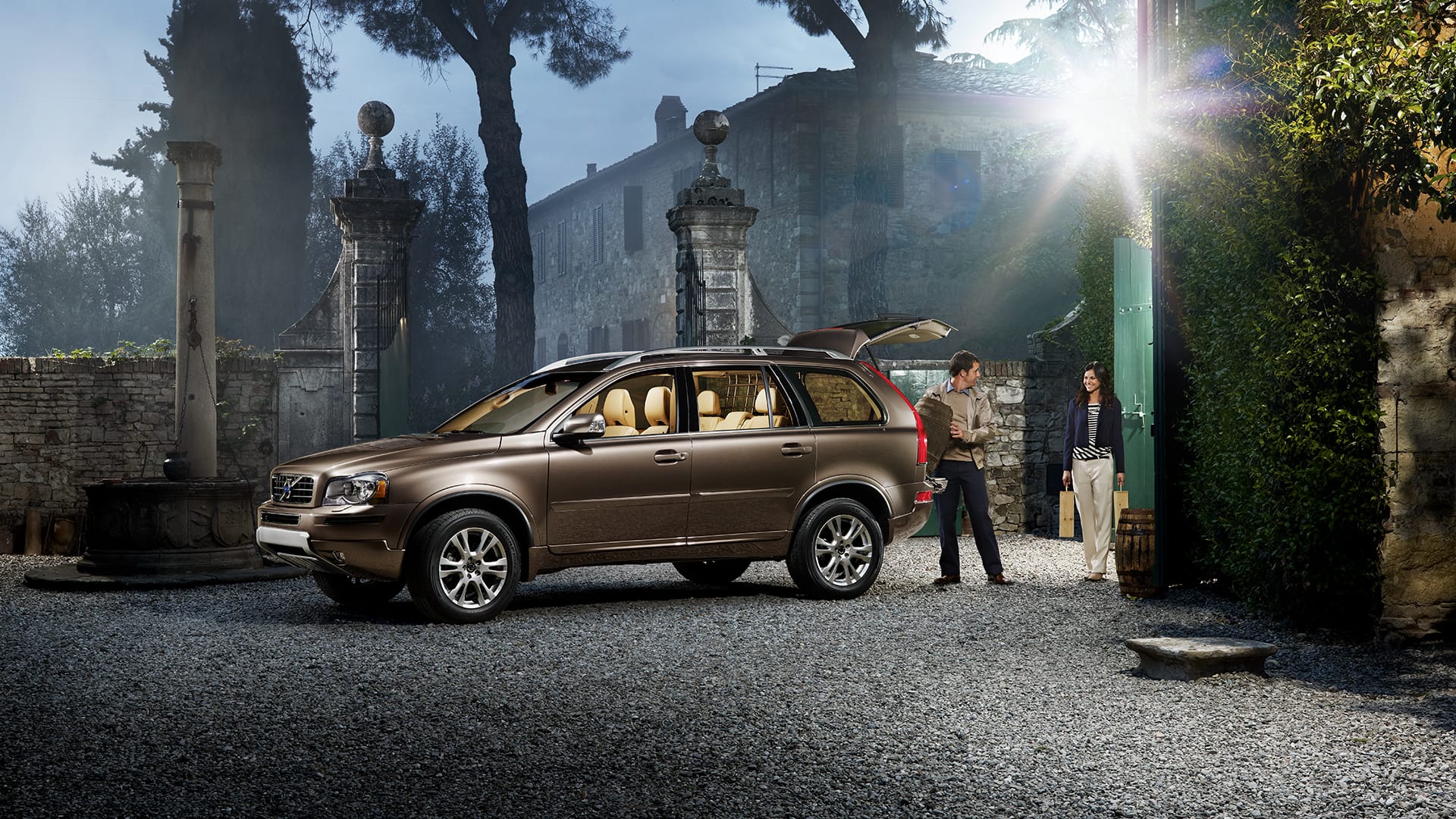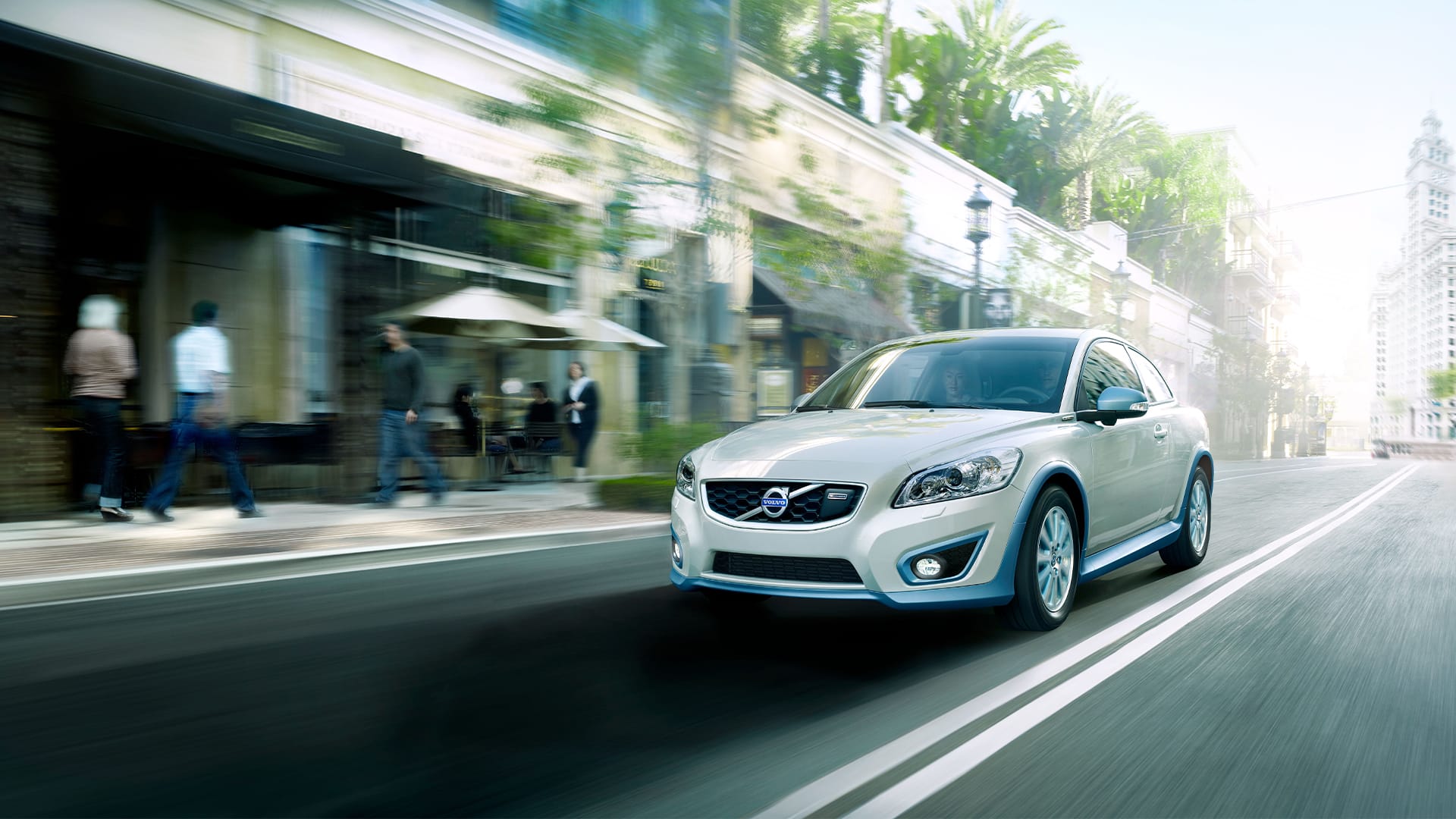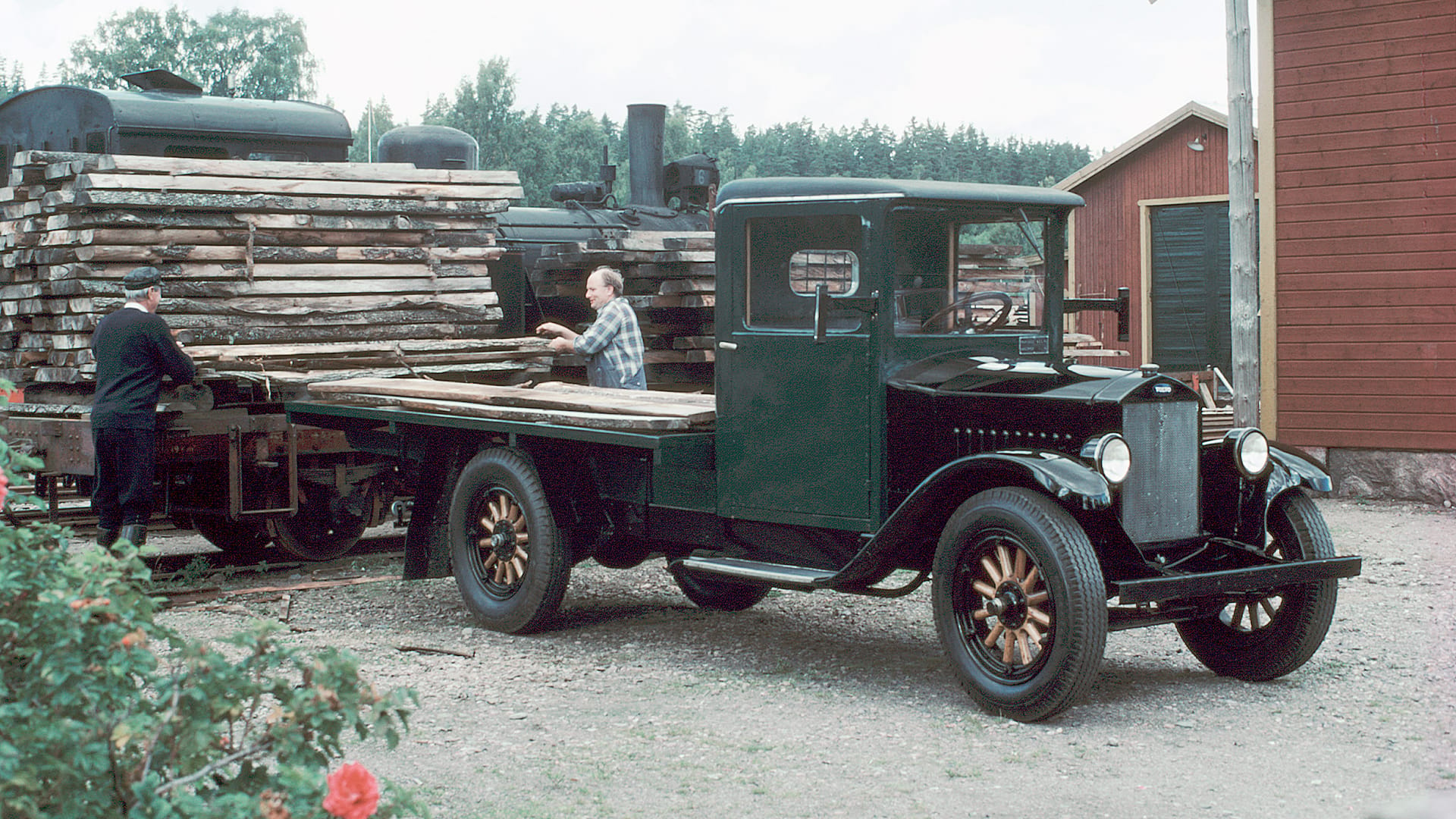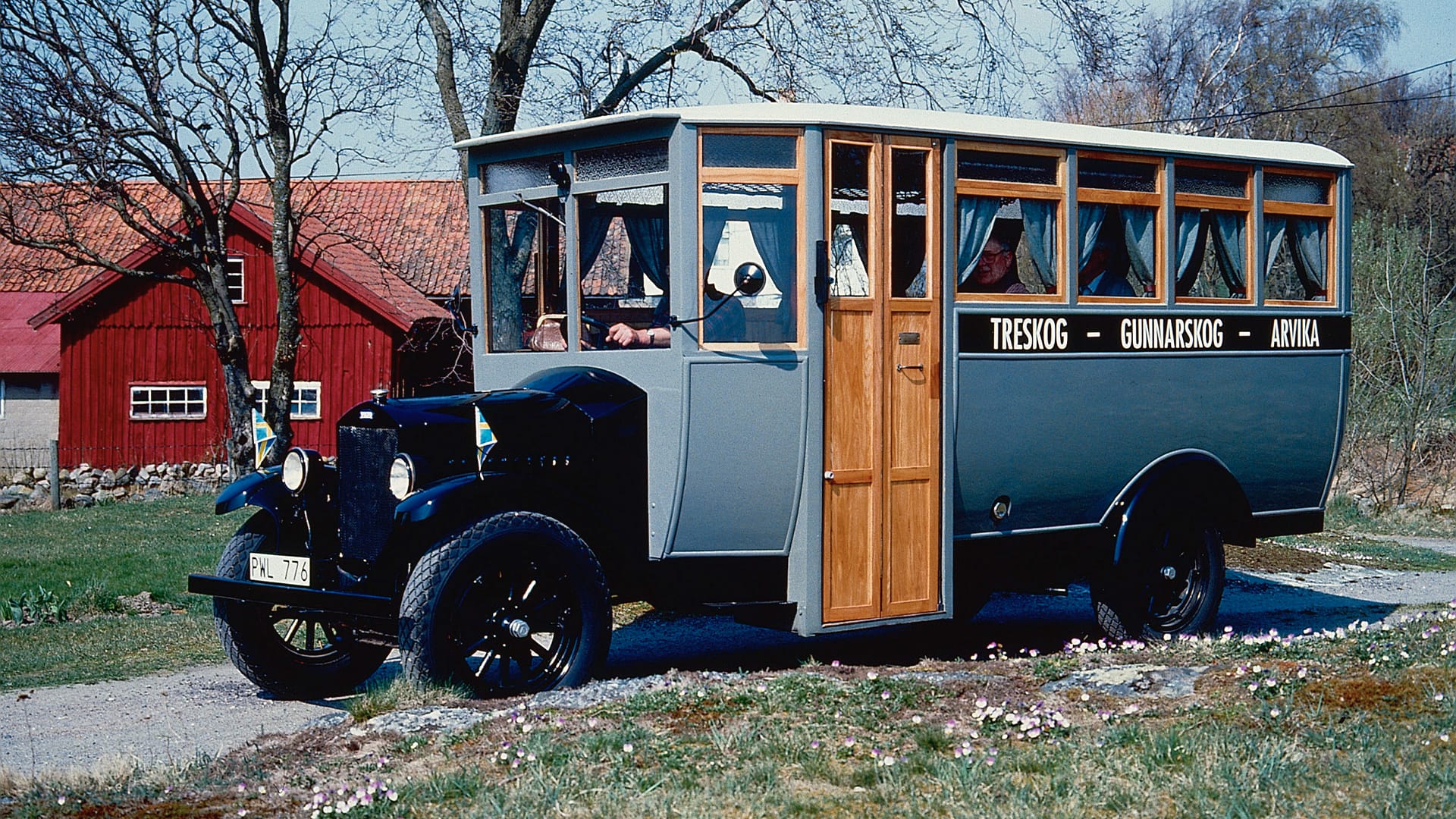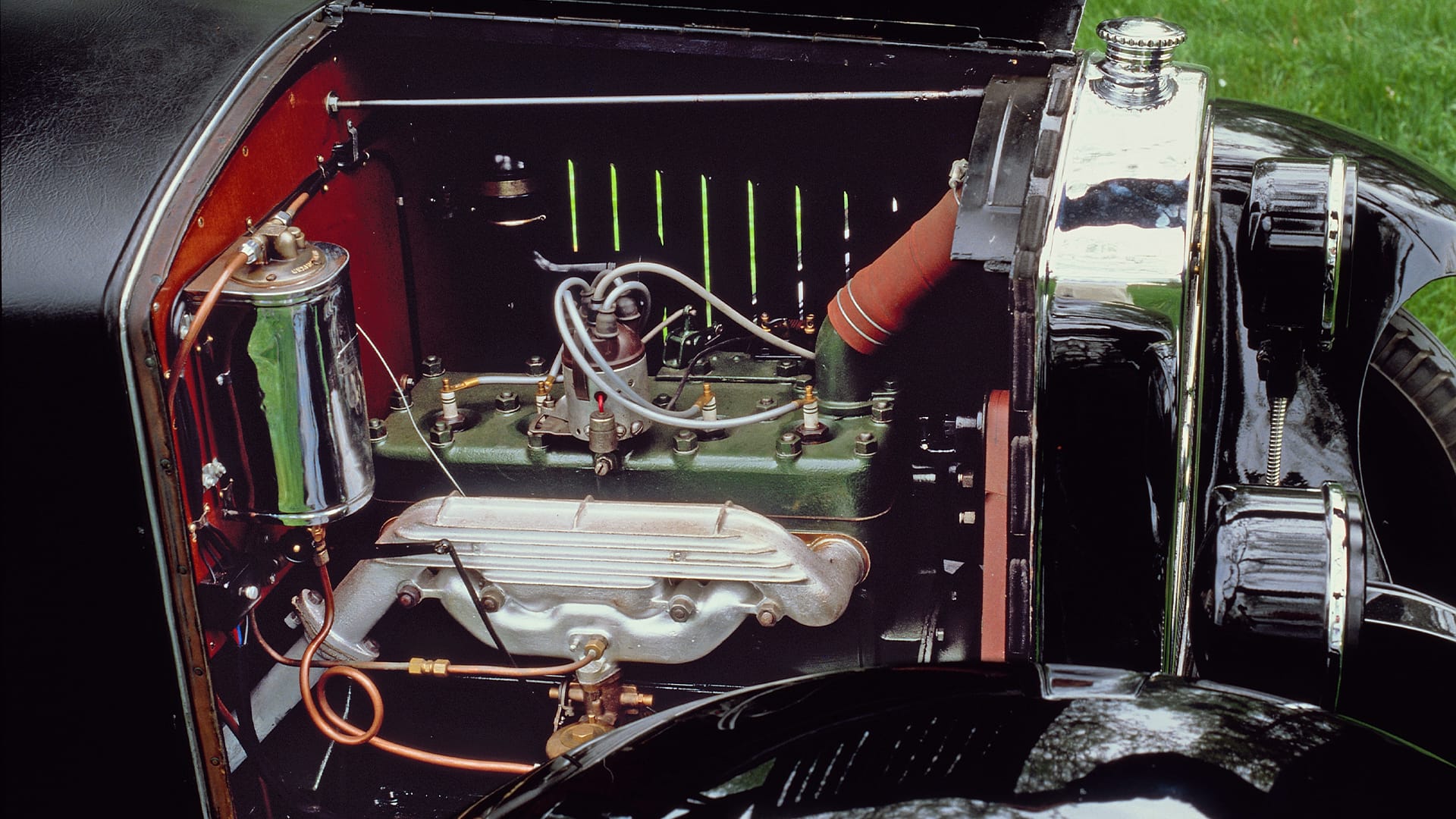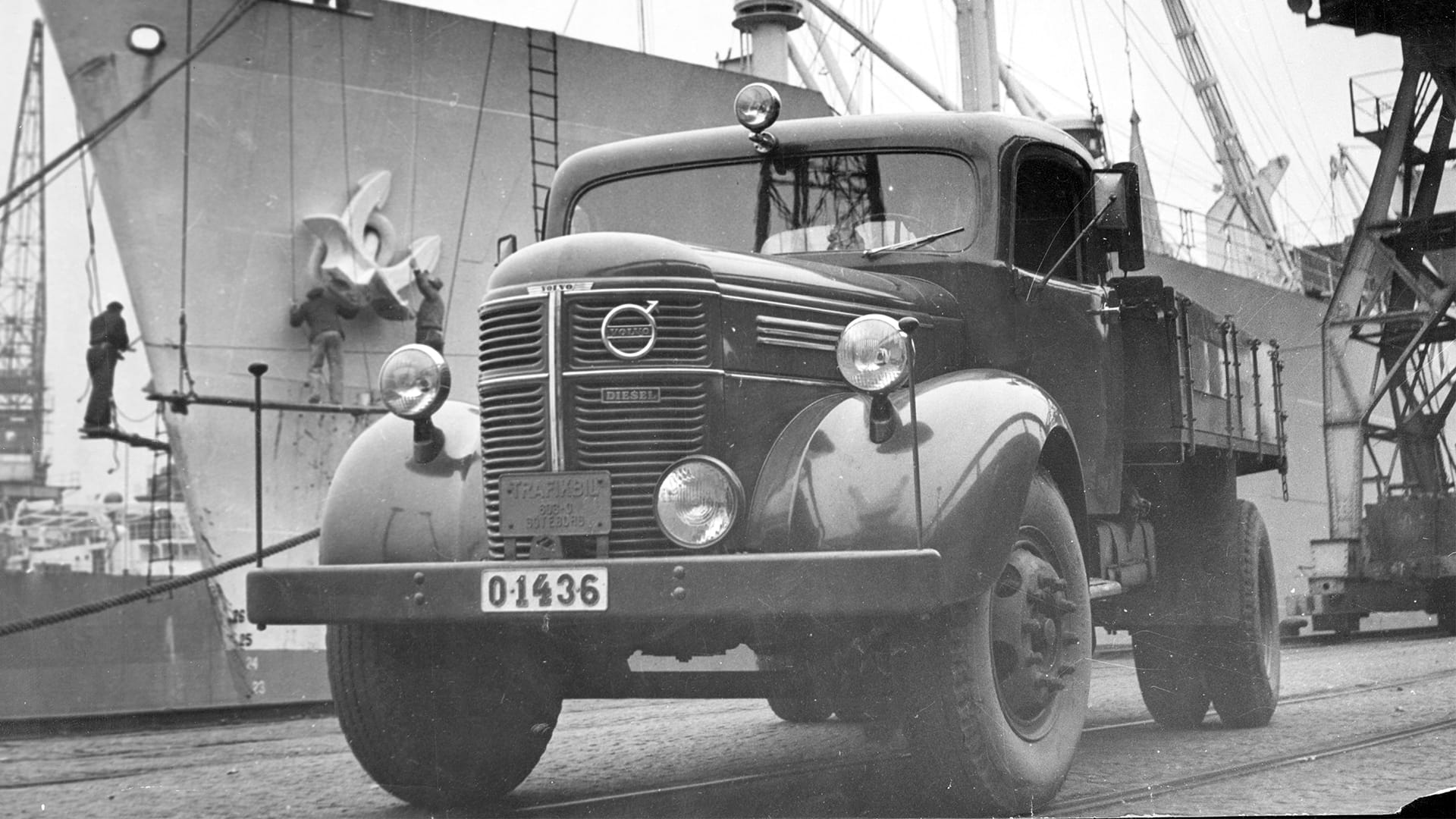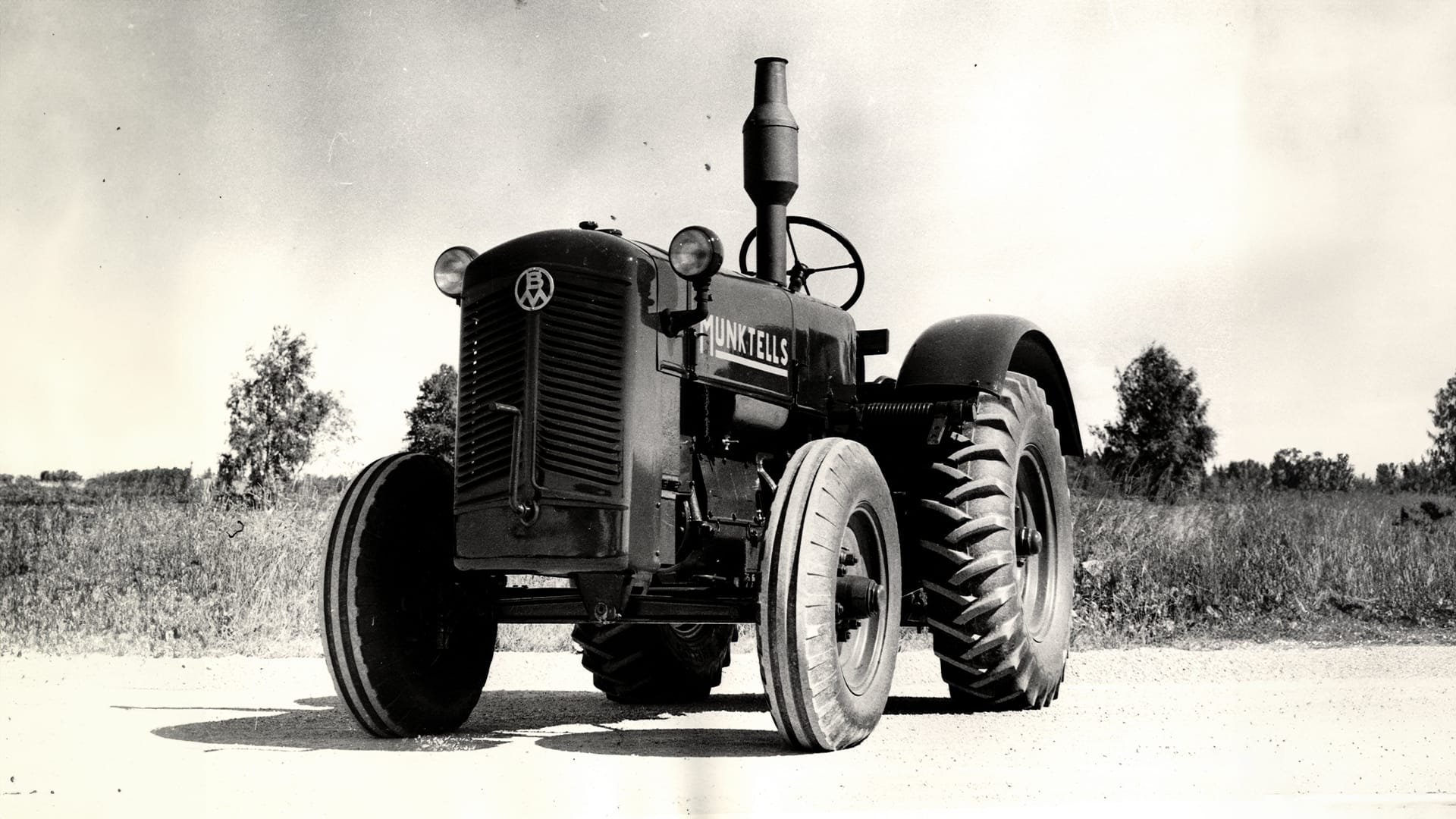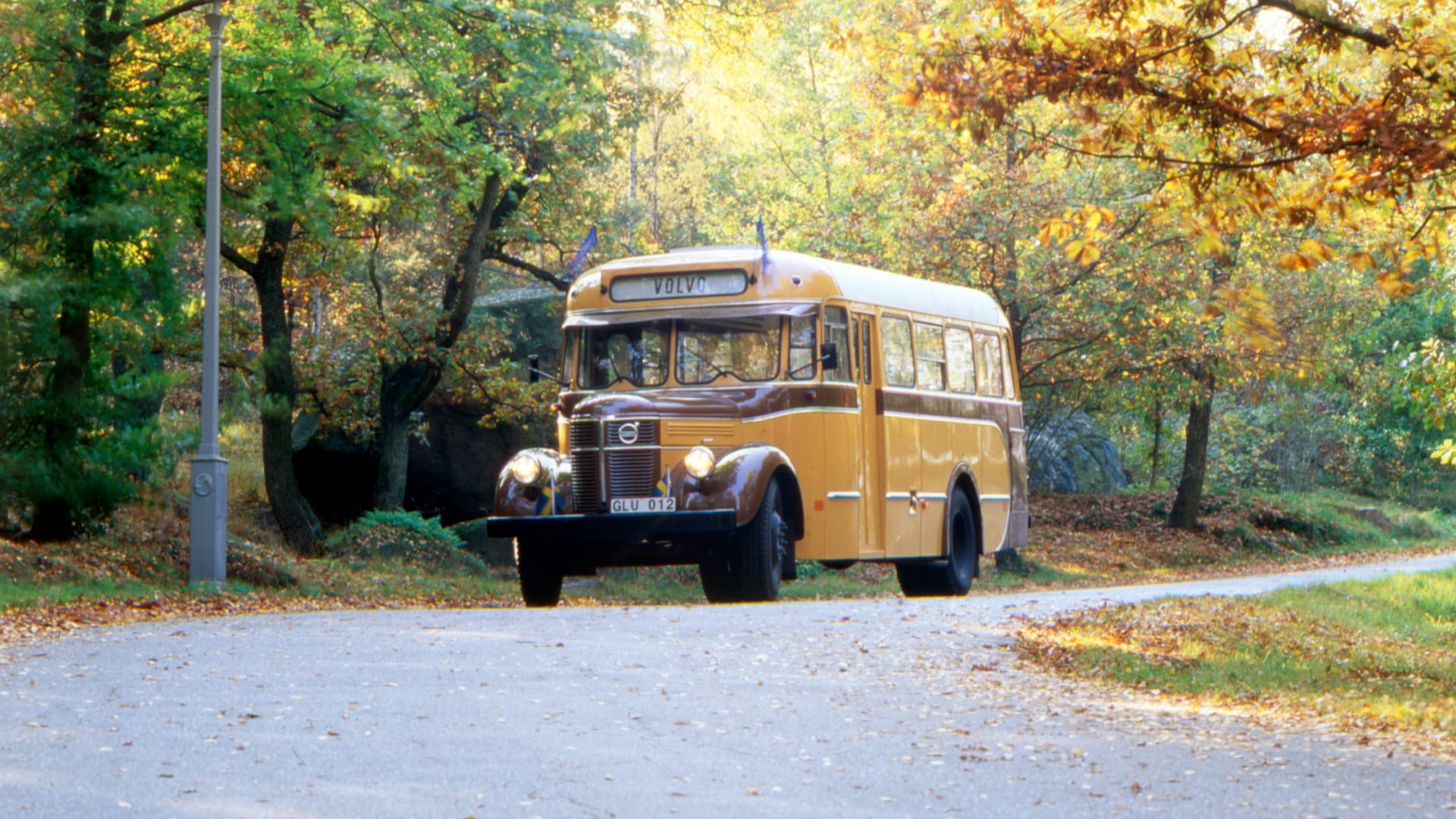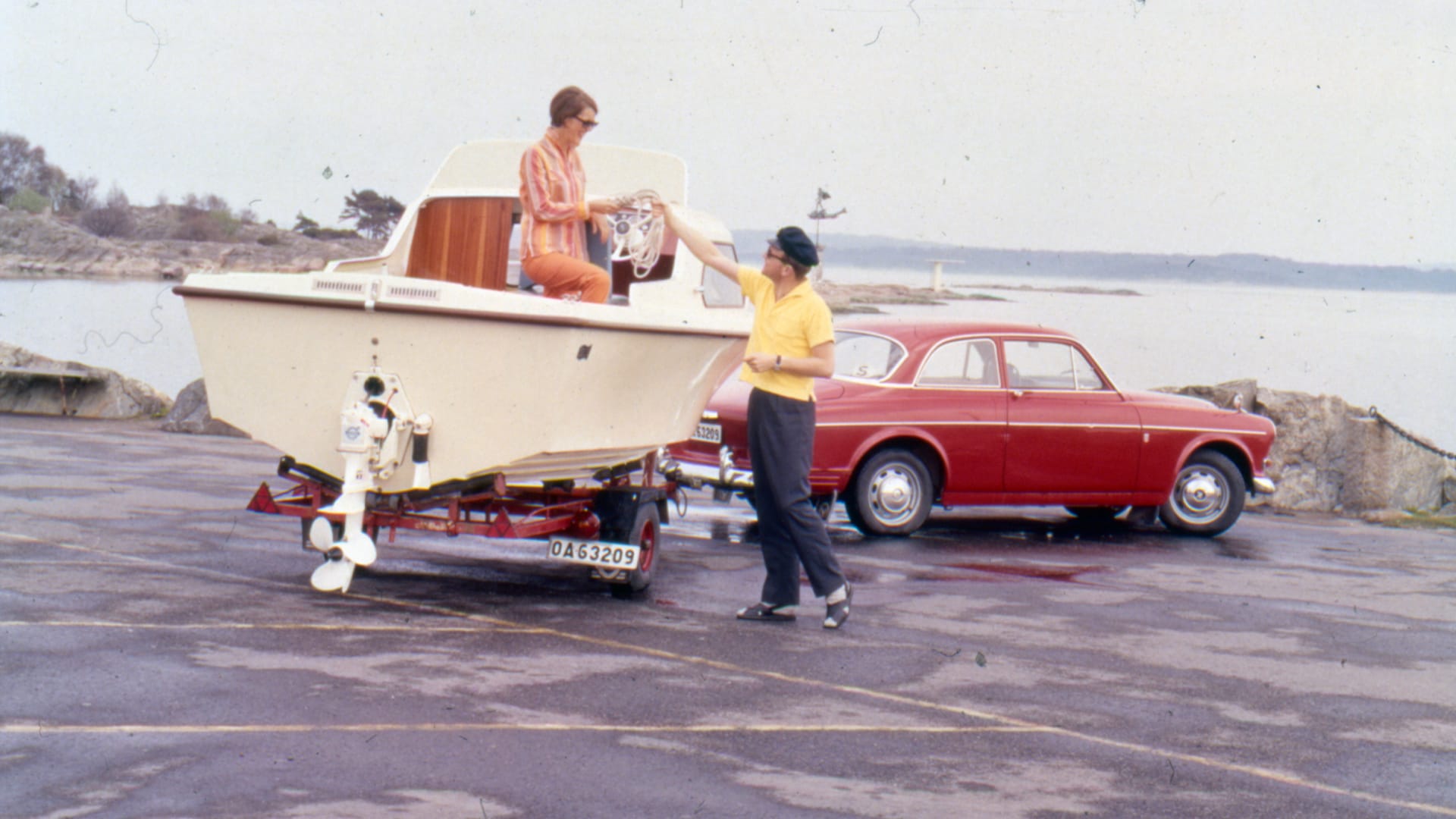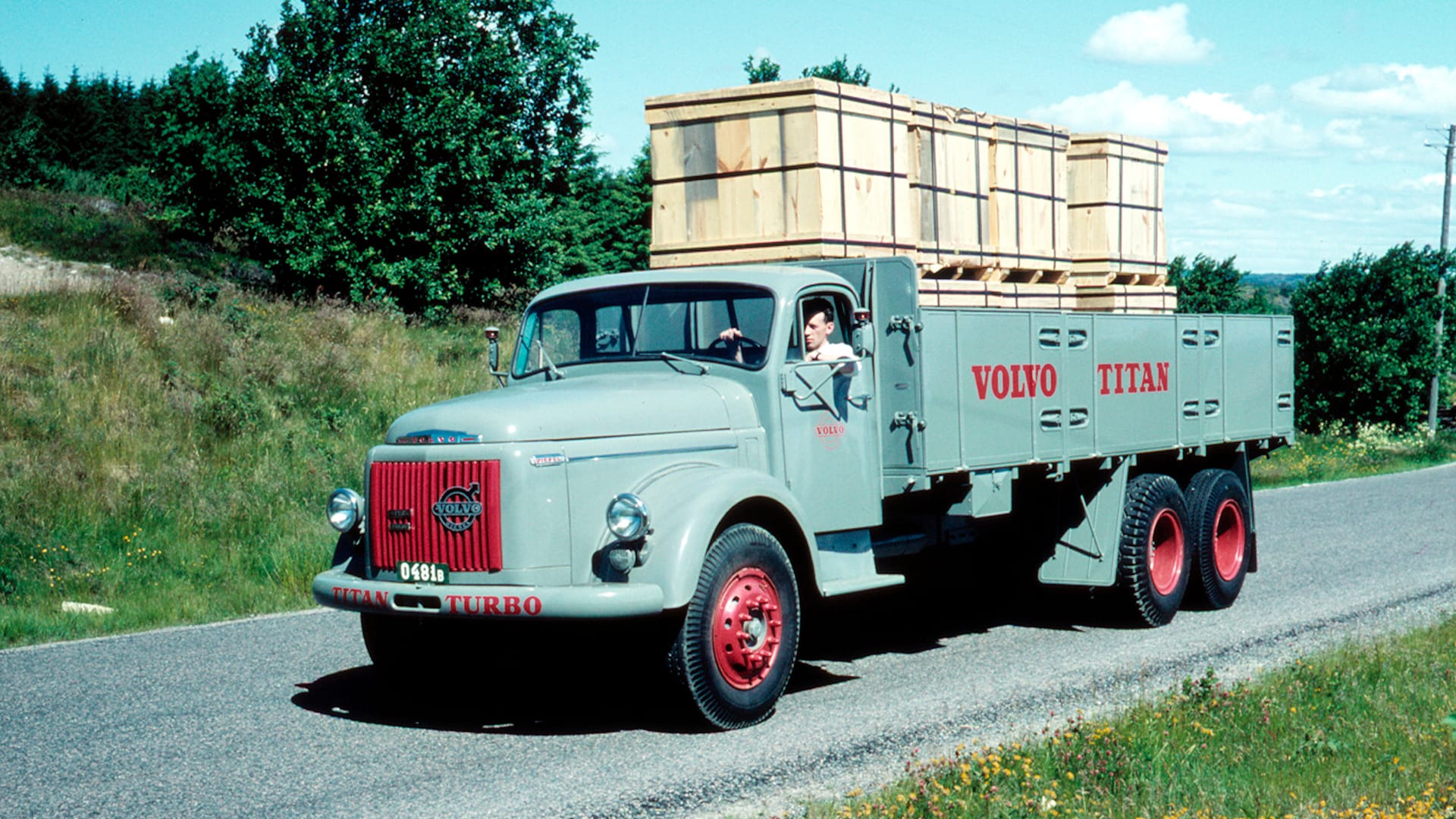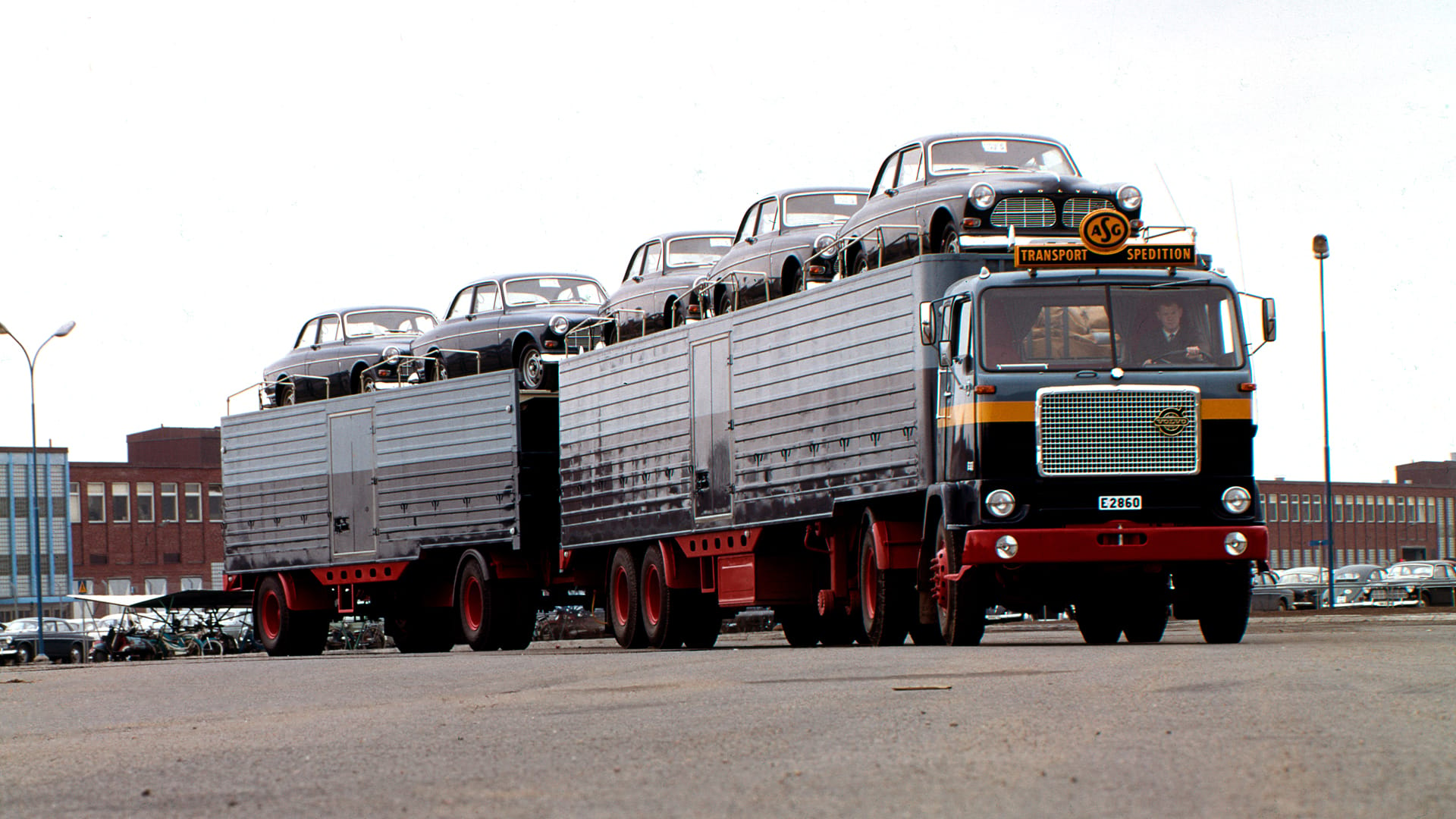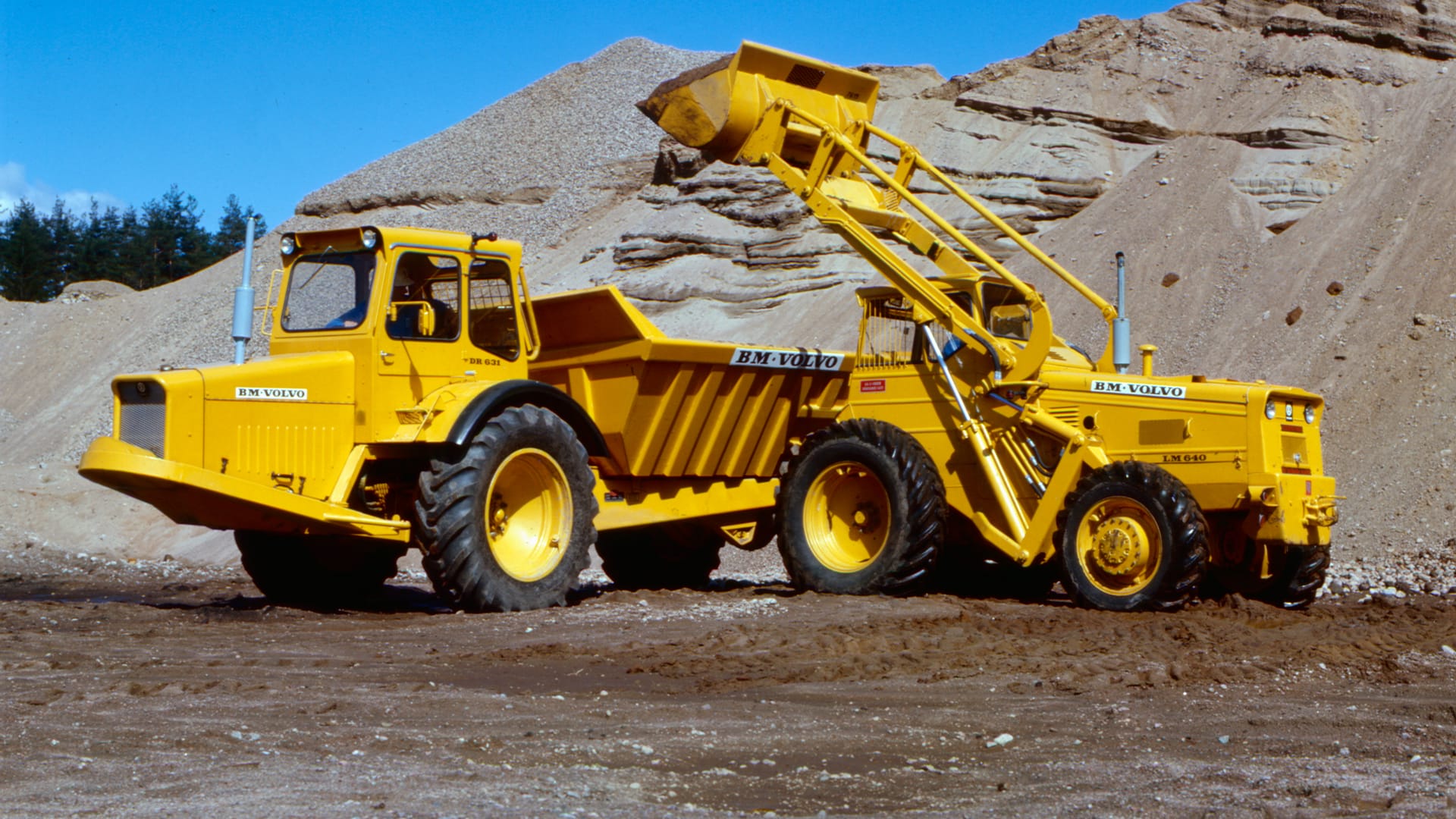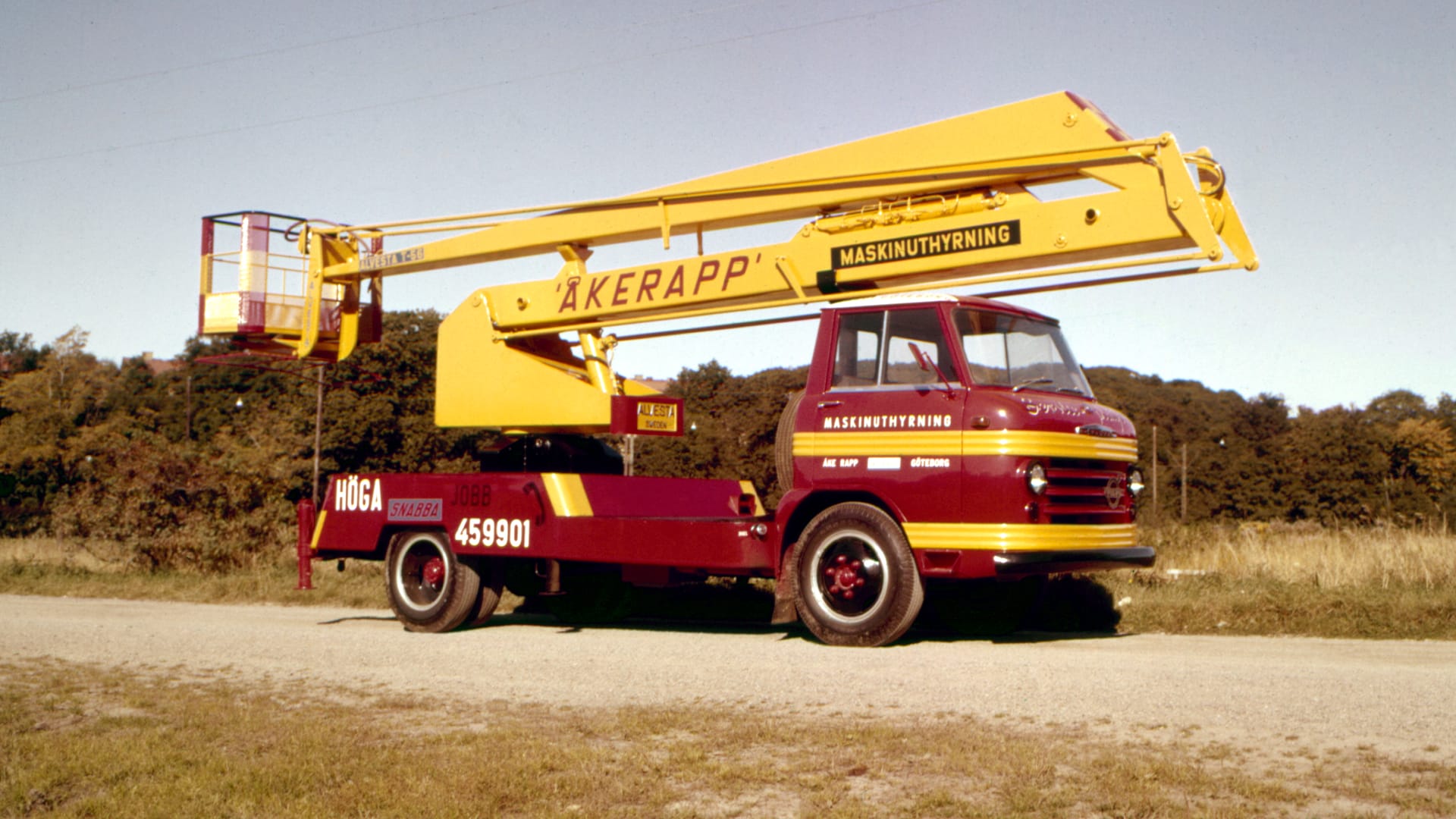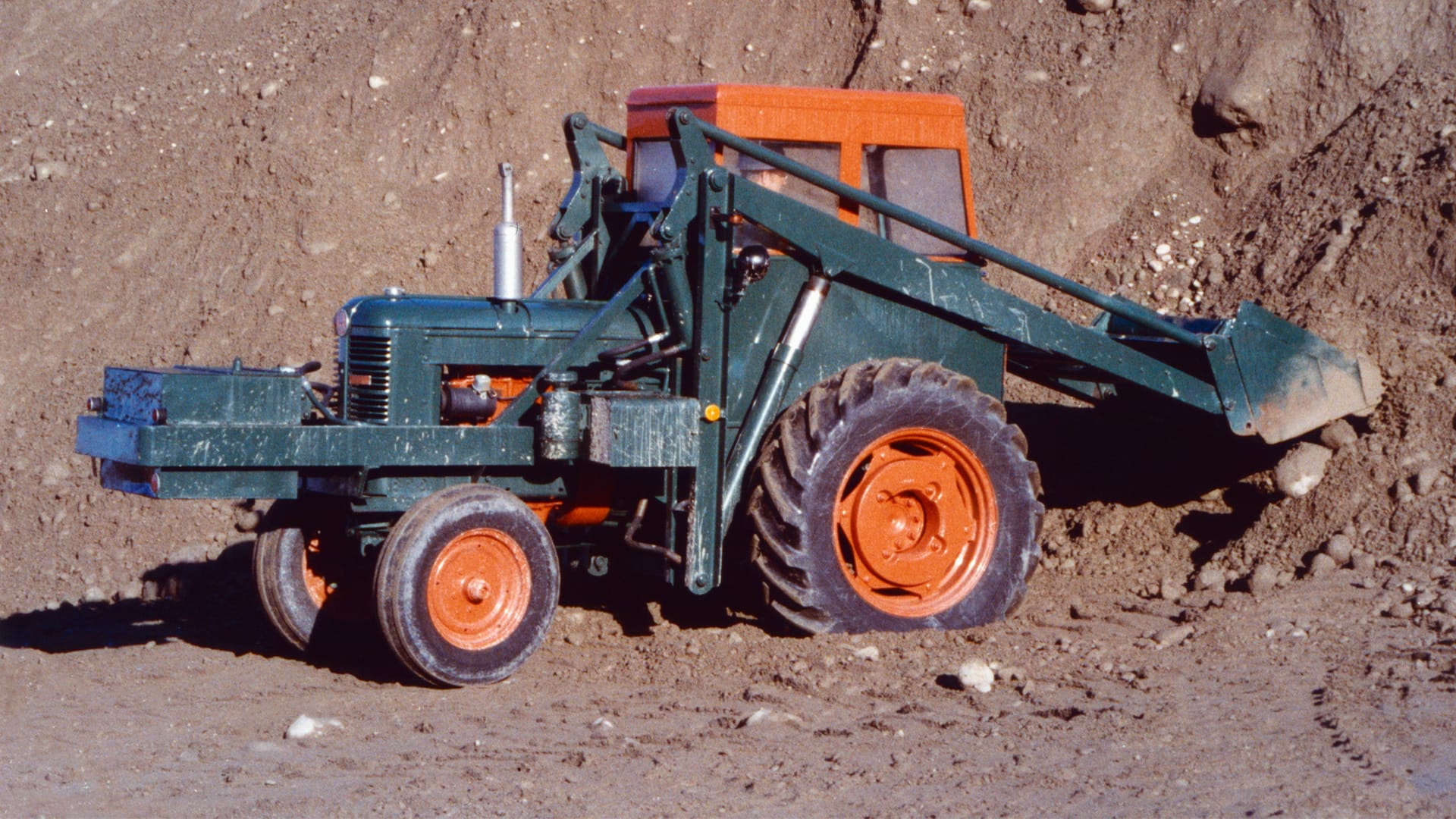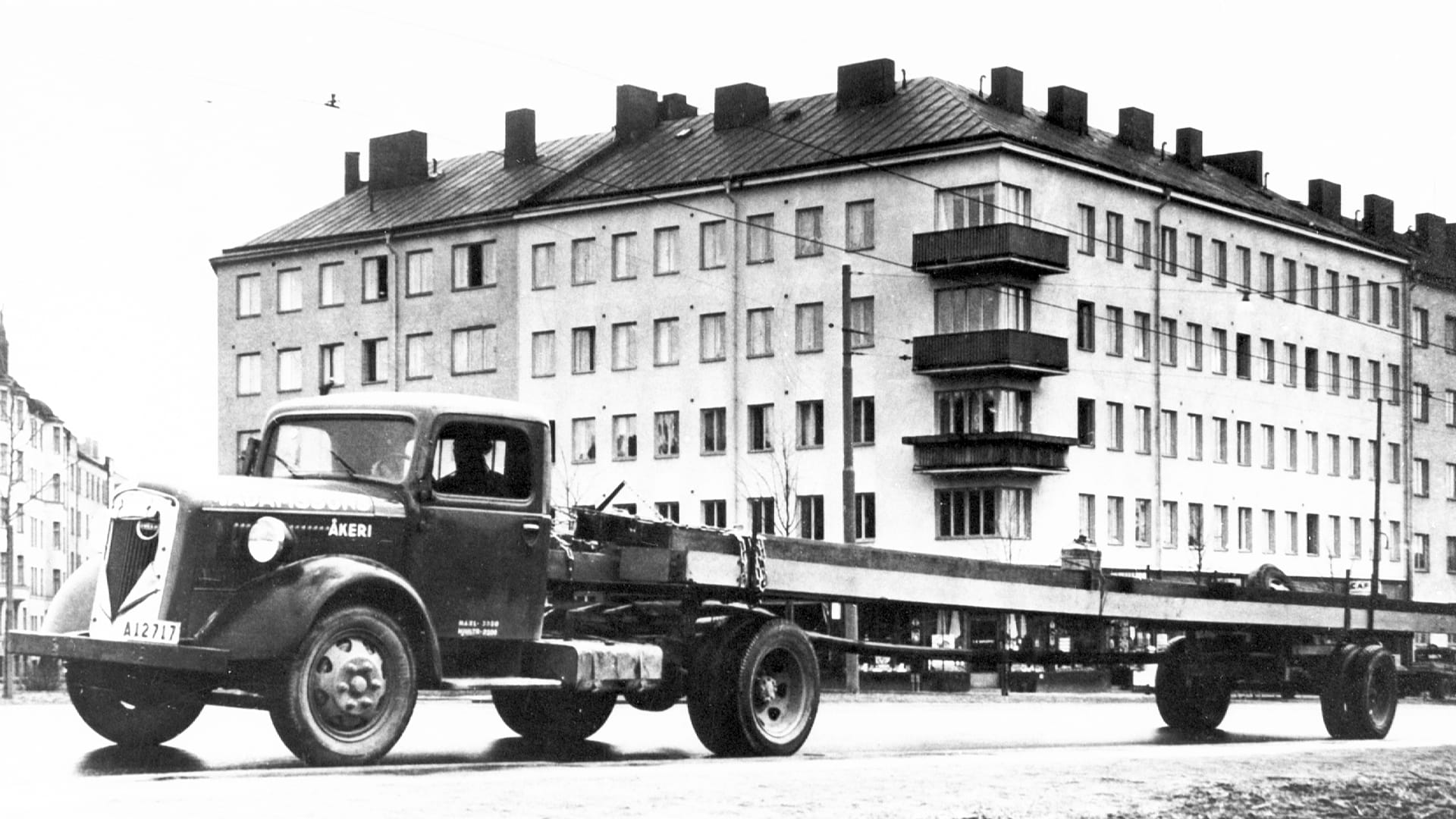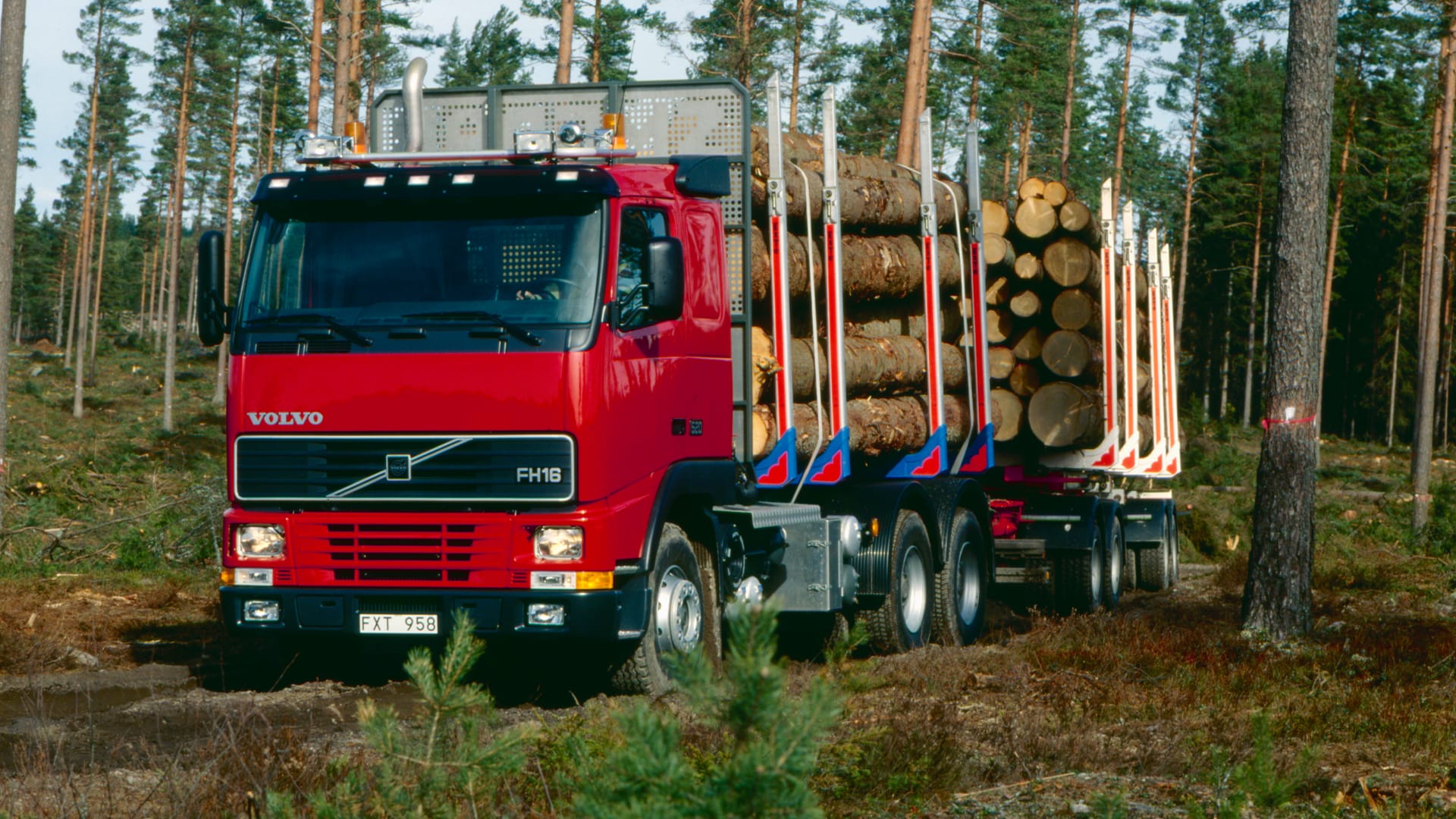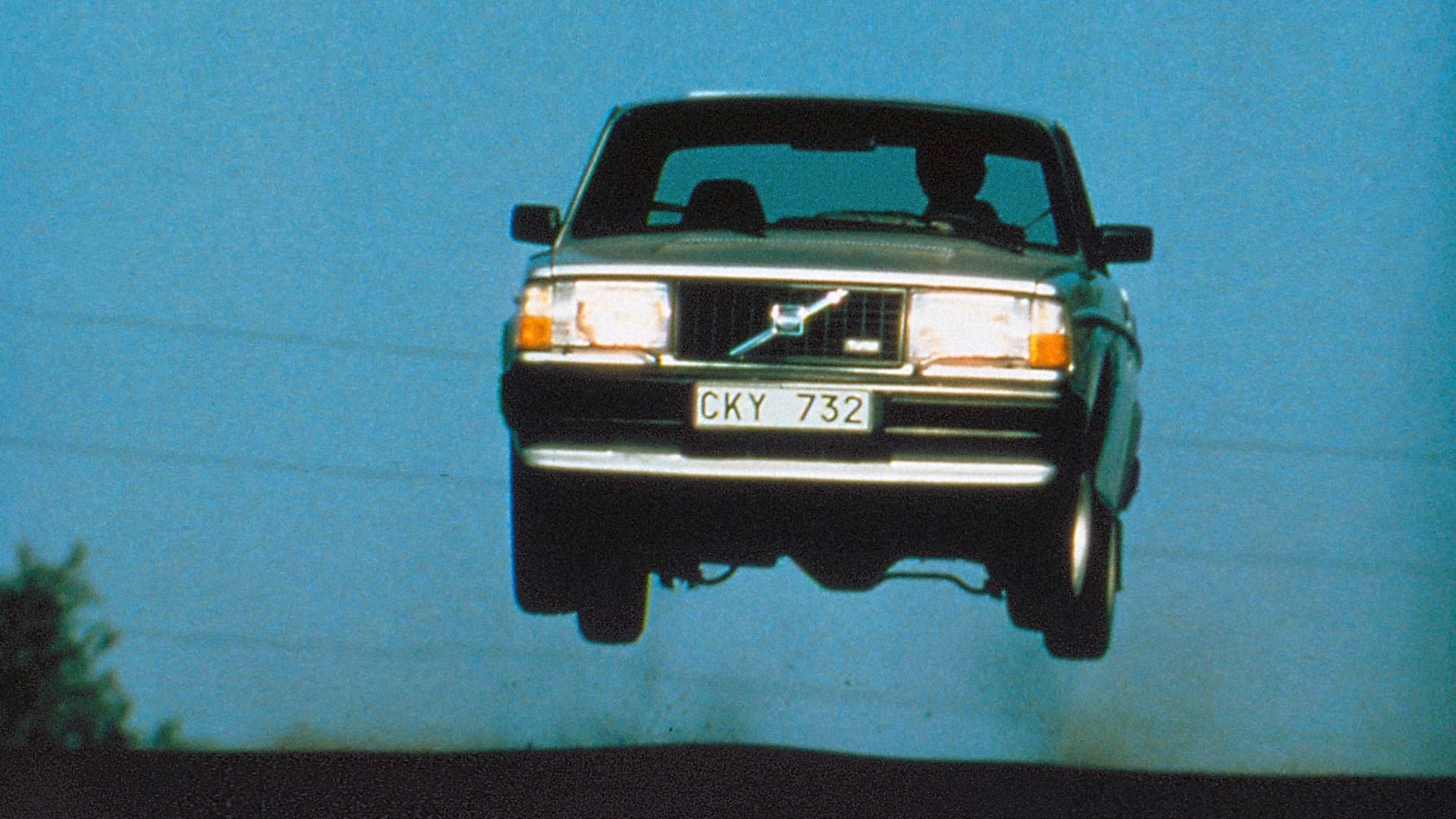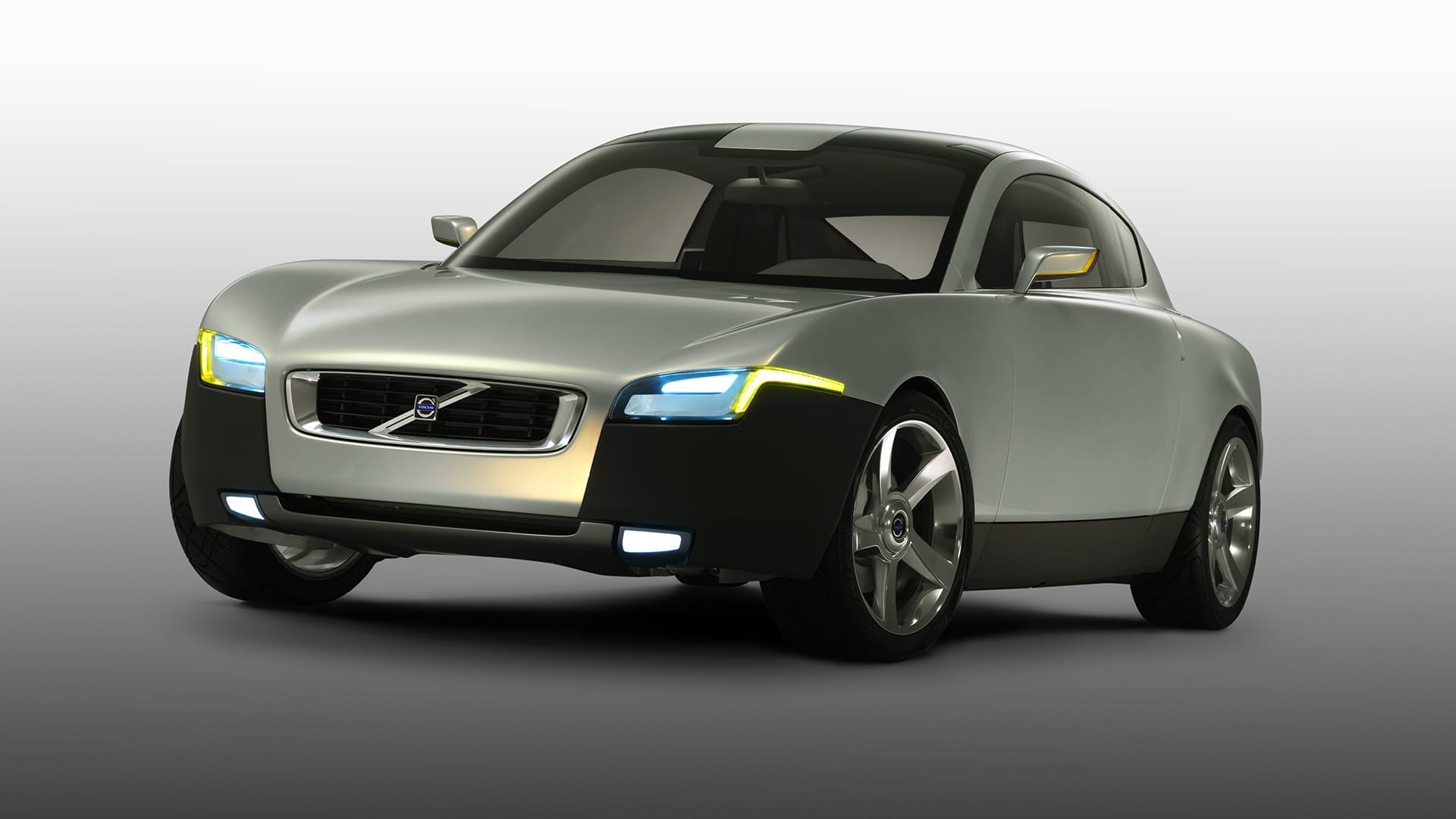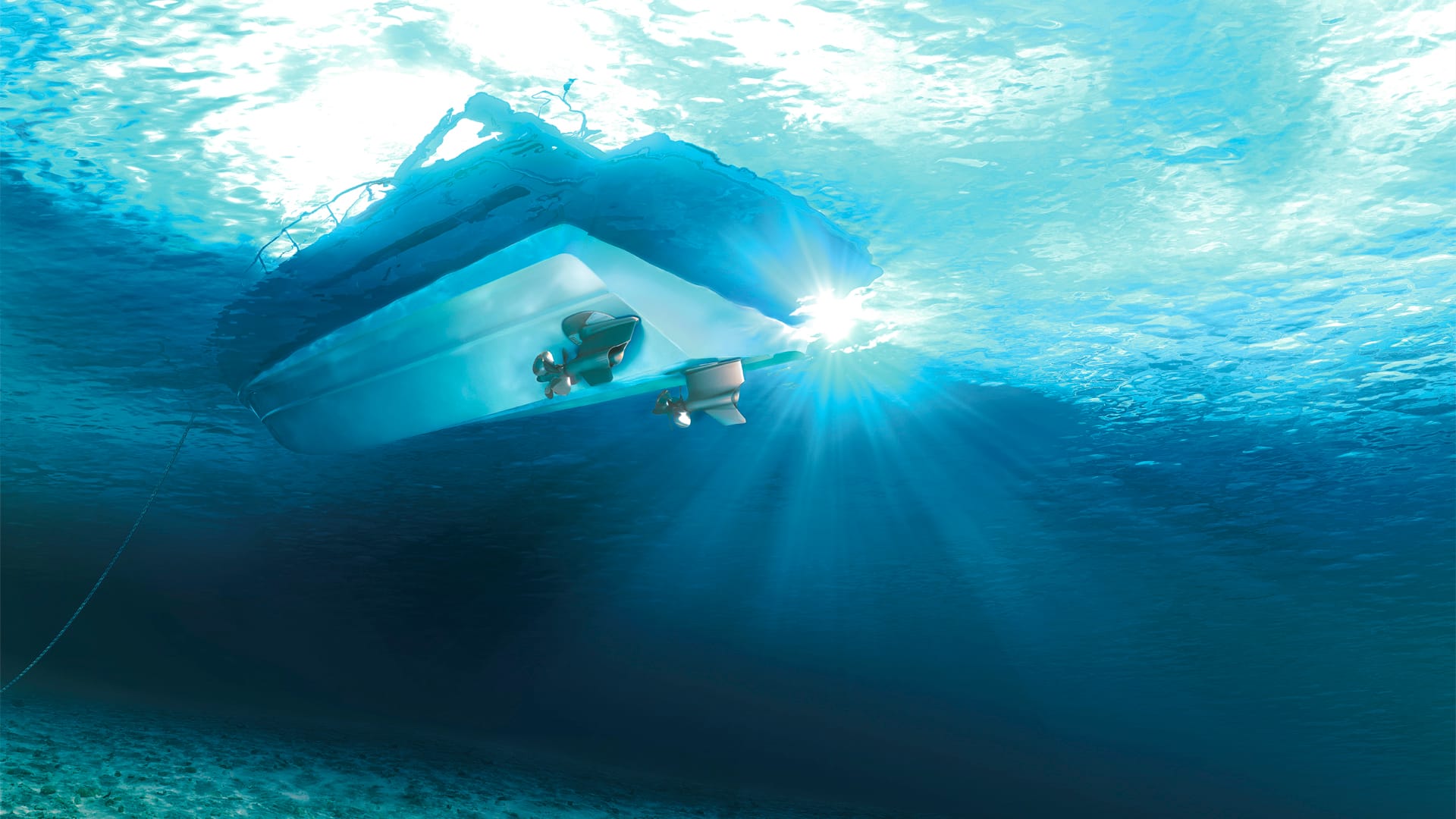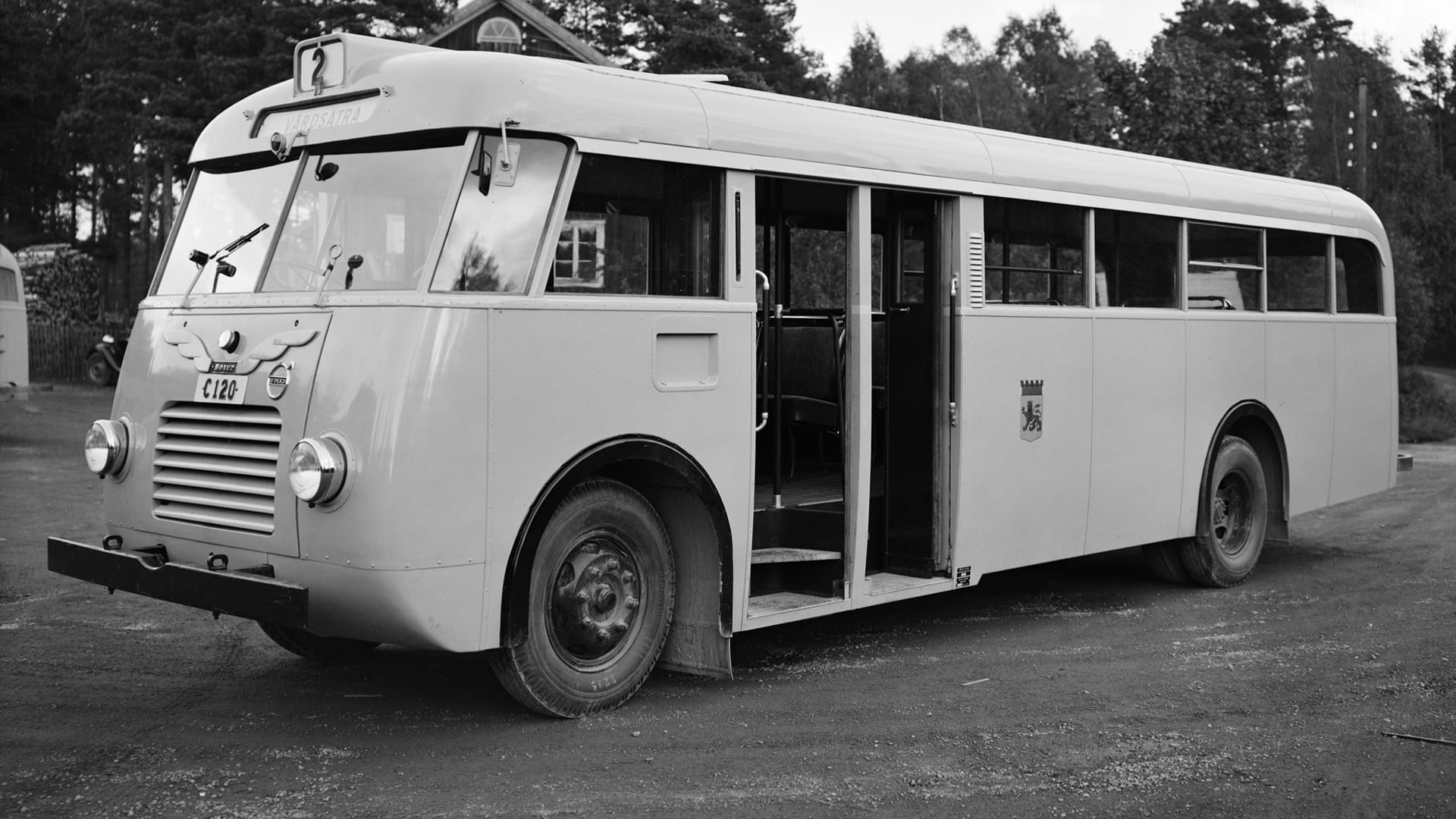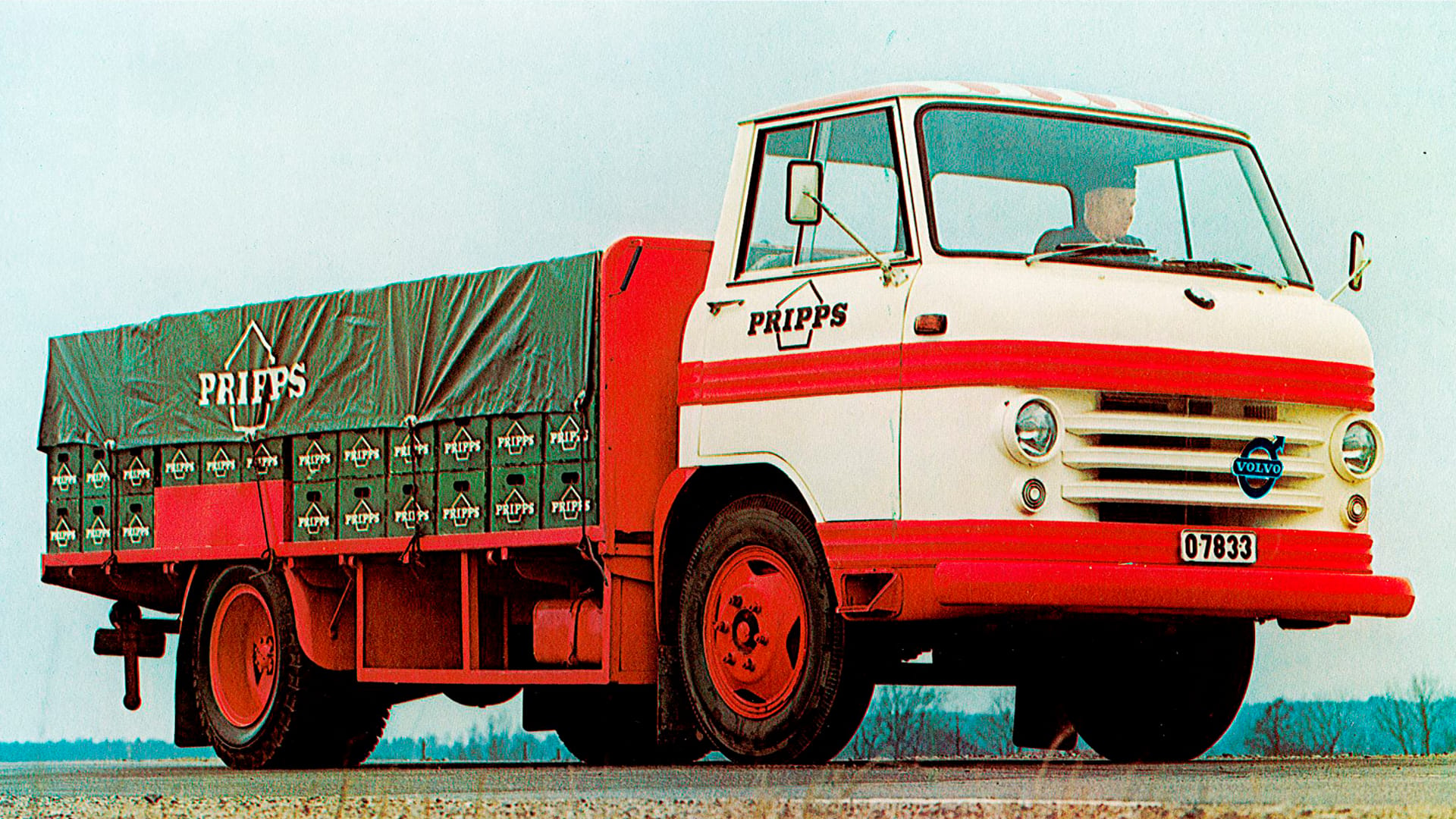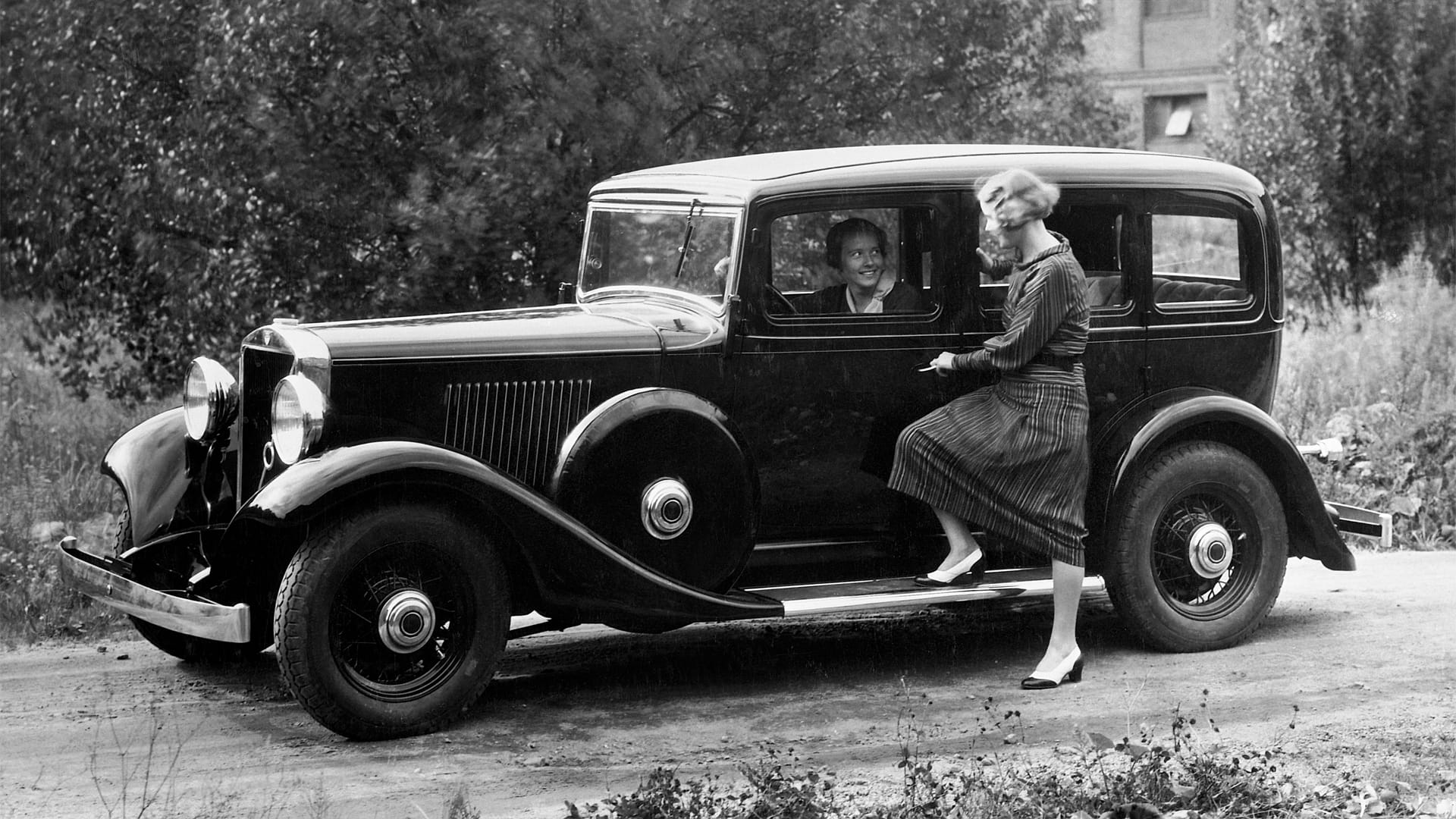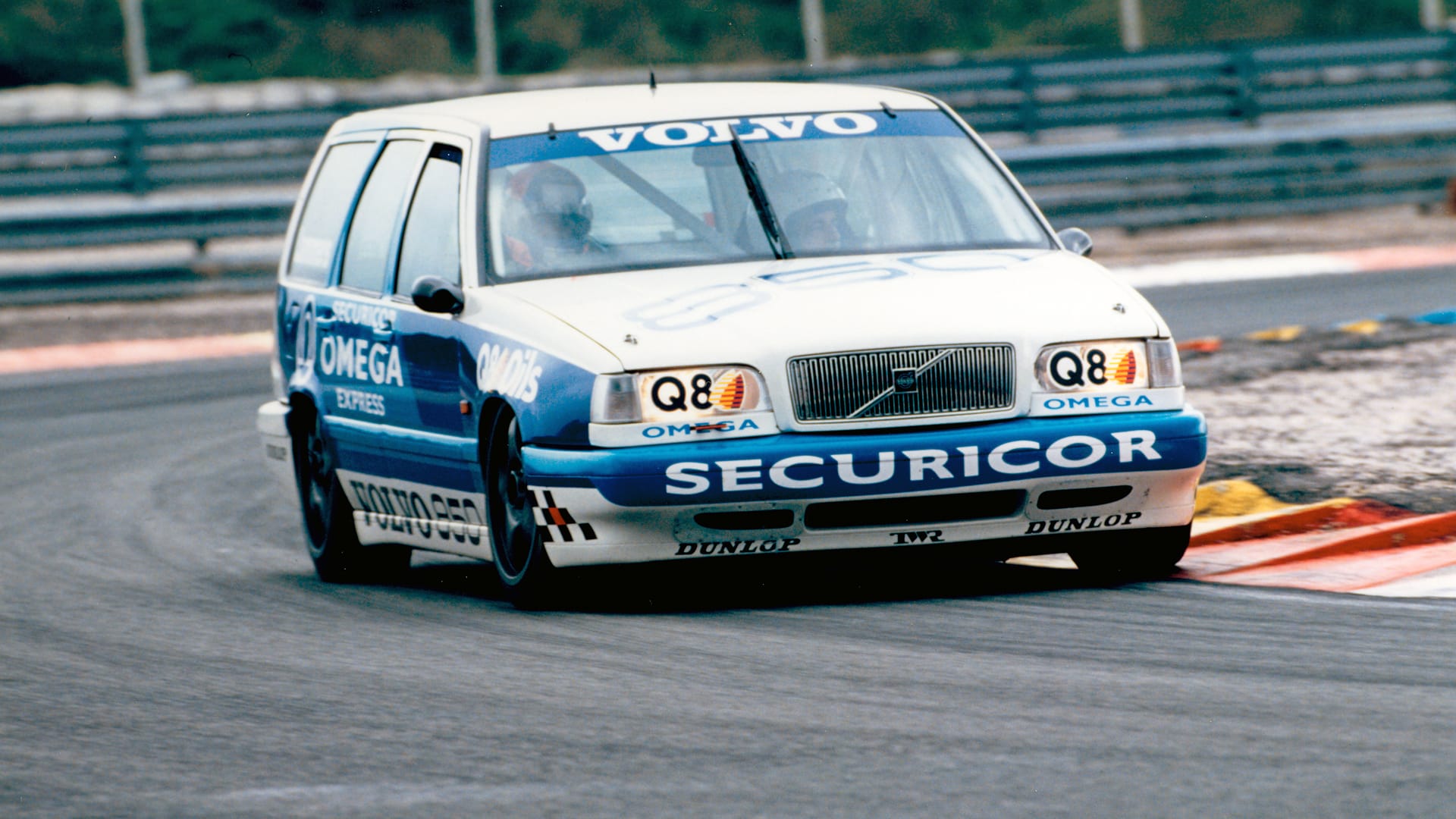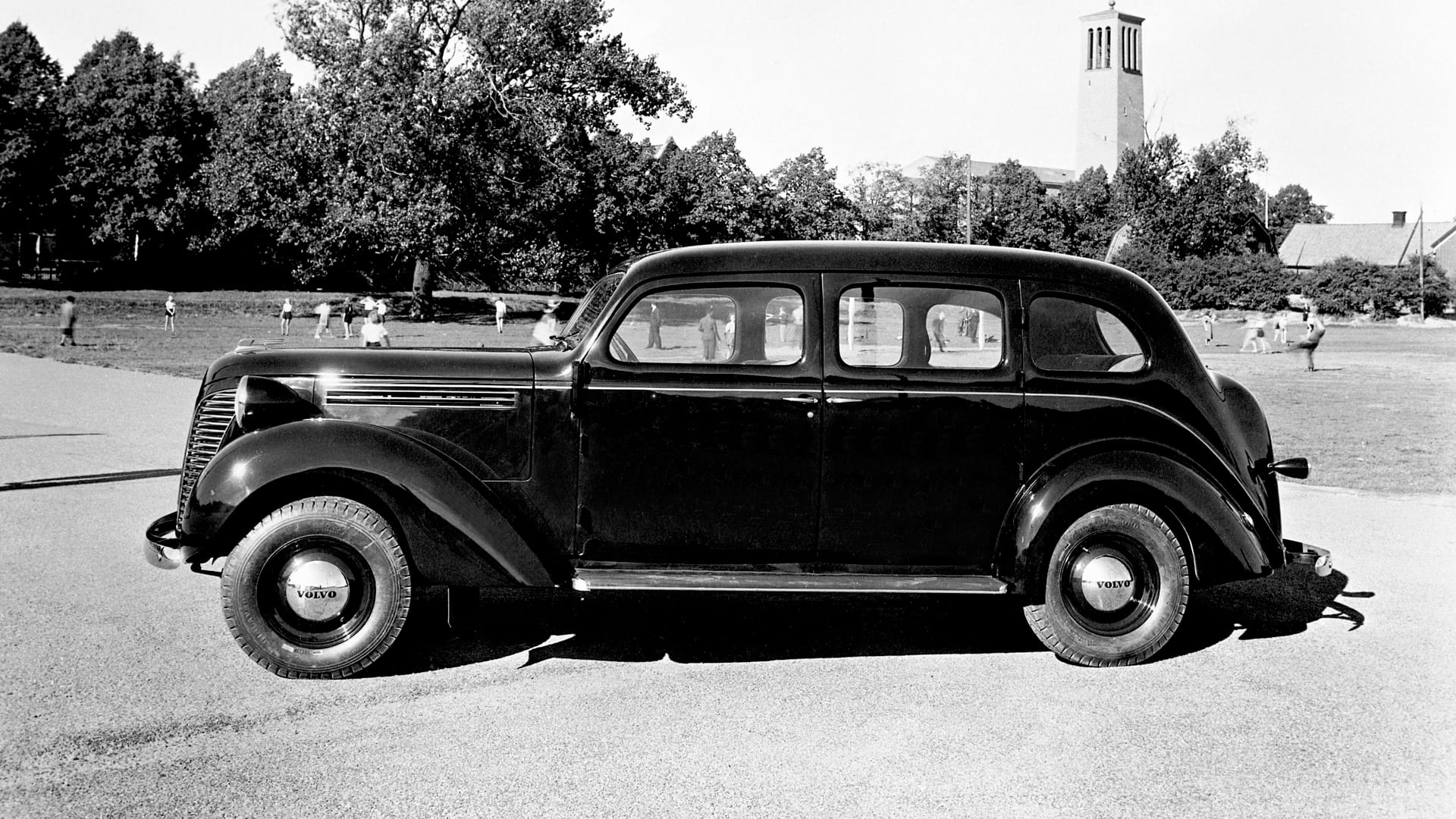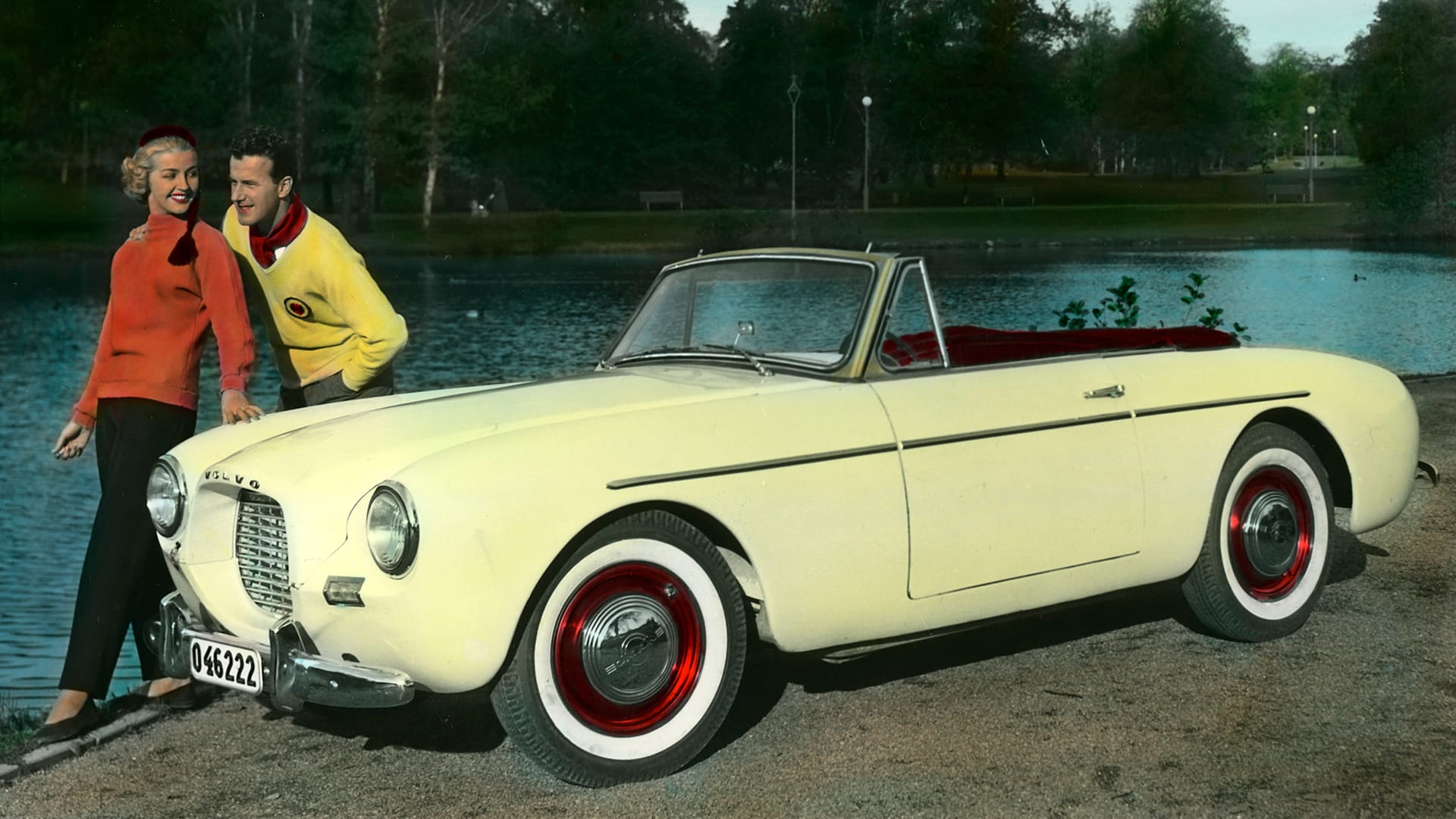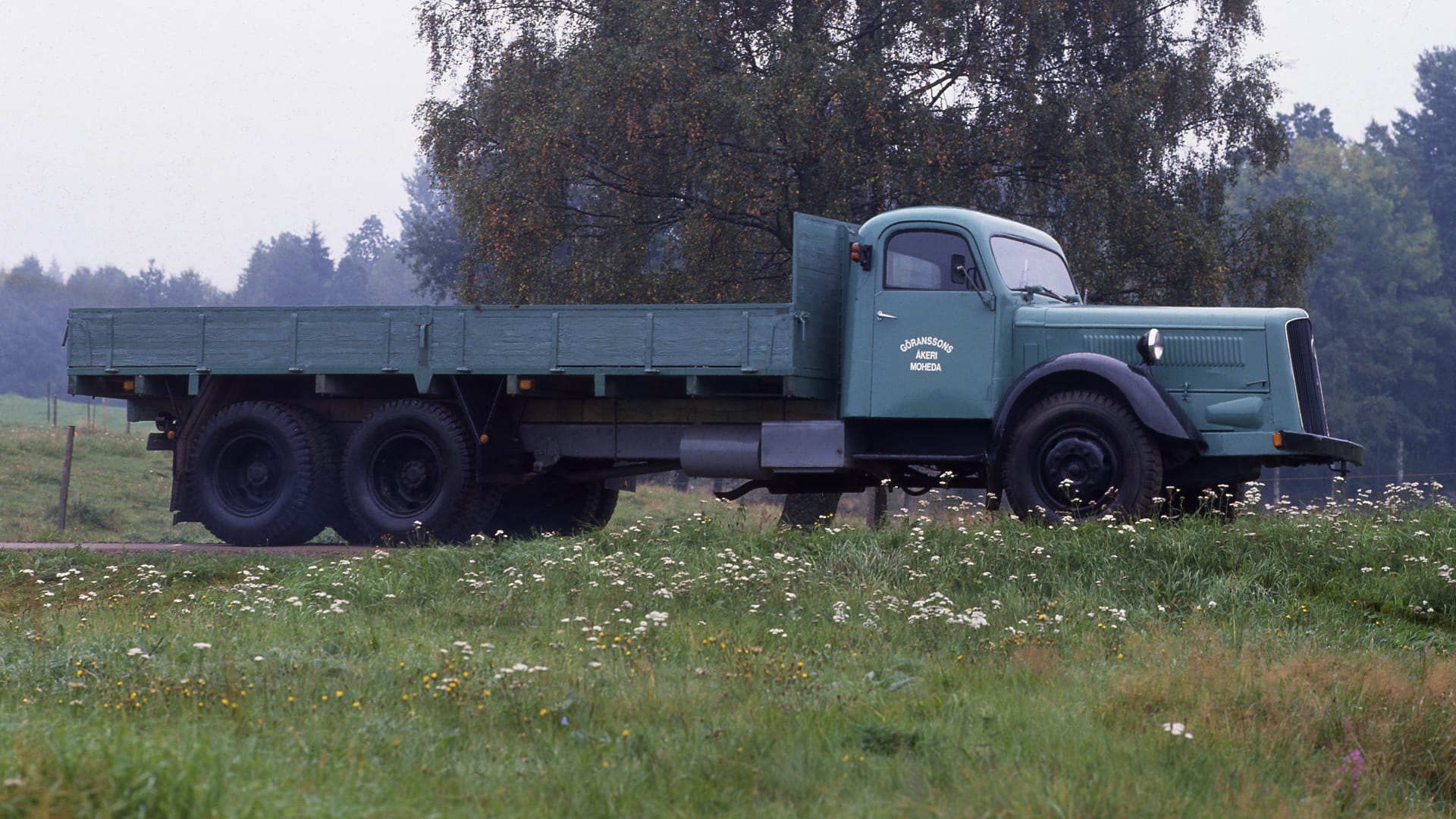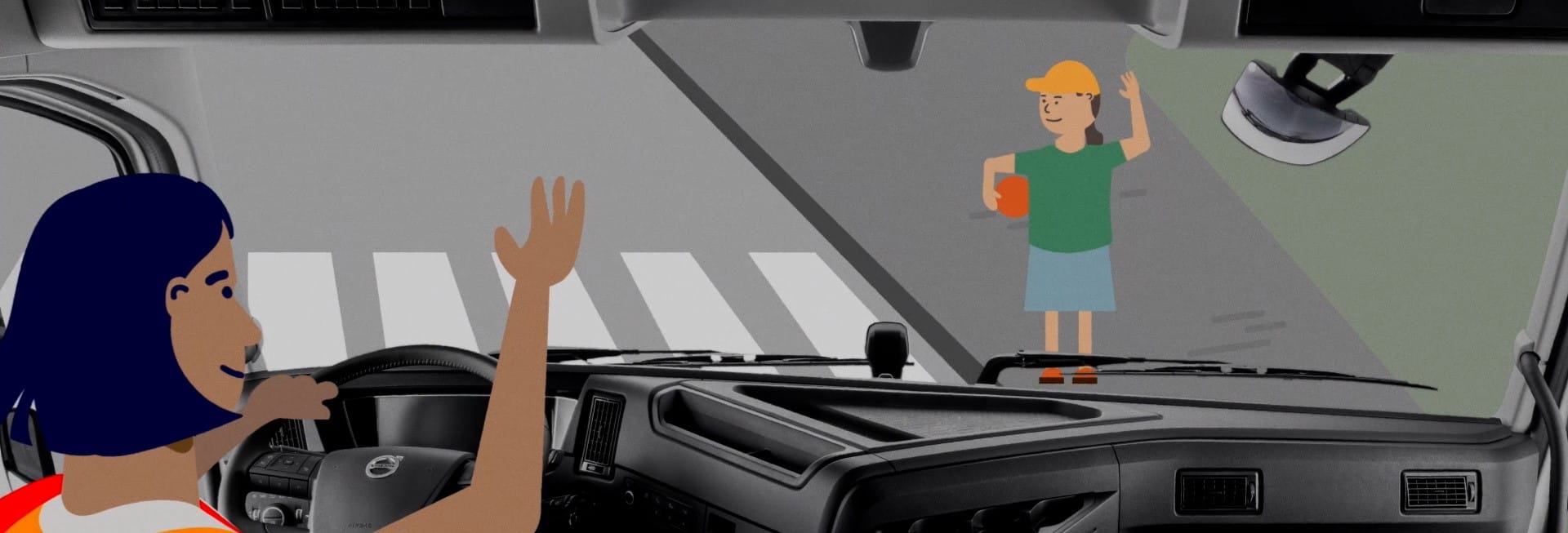Volvo F10
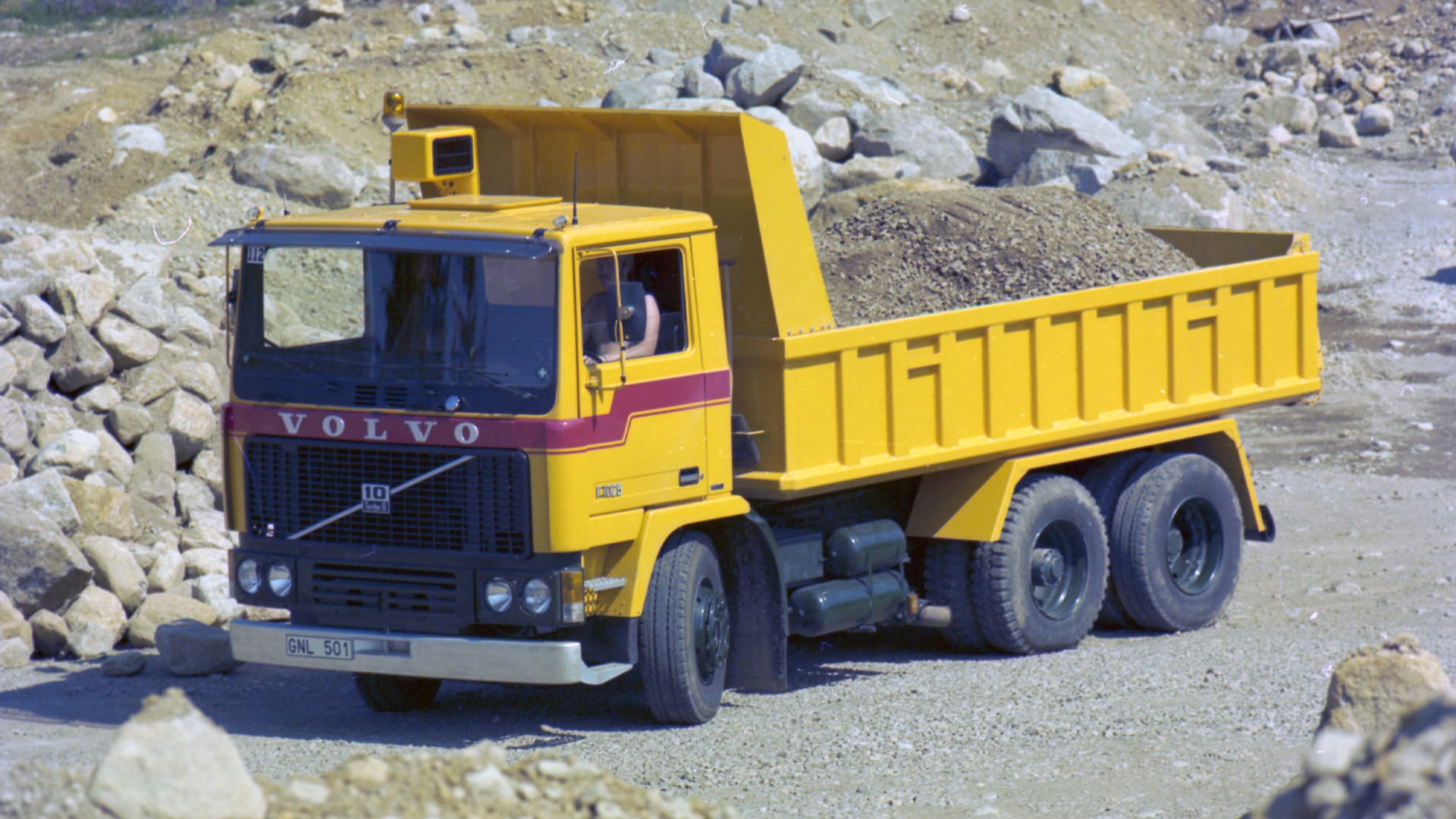
Full focus on the driver
In the 1970s, workplace environment becomes an increasingly important issue in society, including within the truck cabin where the driver operates.
With the F10 (and its sister model, the F12), Volvo takes one of its biggest steps yet to put the driver at the forefront. A range of innovations are introduced regarding safety, such as a stronger cabin and fire-resistant interior. Comfort is also enhanced – the cabin is wider and cushioned, and air conditioning is integrated into the heating system. There are no longer any side windows behind the doors, providing better insulation and improved sleep for the driver, thereby enabling safer driving.
The launch of the F10/12 sets a new standard for safety, ergonomics, and comfort. The truck on display has covered 100,000 miles and is from 1984, the same year the F10 was awarded "Truck of the Year." Mattsson's Transport uses the truck for ten years, delivering gates from Crawford Door, among other tasks. A weekly route is driven in Sweden, Norway, or Finland. When Volvo buys back the truck, it's to preserve an example of the model named "International Truck of the Year." After ten years, it's not easy to find trucks, especially ones equipped with both an intercooler and a Globetrotter cabin. Drivers operating the F10 and F12 experience a completely different working environment compared to earlier models.
Comfort through technology
The new model reflects all the knowledge gathered by Volvo's engineers. The cabin is wider than that of competitors, offering better interior space. Noise and, above all, vibrations are minimized through several measures. The cabin isn't fixed to the chassis but suspended on coil springs at both the front and rear. The seats are also suspended on springs. The gear lever isn't mounted on the chassis but in the cabin to reduce vibrations. For the first time, a European truck is equipped with air conditioning integrated with the standard heating system. The driver can travel from cold Scandinavia to warm Southern Europe without constantly adjusting the heating controls. The F10 can also be equipped with a fuel-powered heater to maintain warmth when it's time to sleep. A lockable storage compartment increases comfort and reduces the risk of loose items flying around the cabin in the event of an accident.
Good working environment
Behind the philosophy that creates the F10 lies a Swedish awareness that workplace environment must provide employees, including truck drivers, with security, safety, and opportunities to do a good job. Incidentally, one of the most important laws in this area comes in 1977, the same year the first version of the F10 is launched. The Occupational Safety and Health Act states that "technology, work organization, and work content must be designed so that the employee is not exposed to physical or mental stress that may cause ill-health or accidents." It also states that "the employer must consider the special risk of ill-health and accidents that may result from the employee working alone. Premises as well as machinery, tools, protective equipment, and other technical devices must be well maintained."
Selling like hotcakes
A truck driver's situation and workplace fit unusually well into that description – and Volvo's management listens. At launch, the F10 (with a 9.6-liter engine) and F12 (with a 12-liter engine) are considered the world's most comfortable and safe trucks. The series becomes Volvo's biggest success to date, with 200,000 trucks sold. Technically, the model is largely based on its predecessor, the N-series, which debuts in 1973.
Founder's principle
Gustaf Larson is one of Volvo's founders. His program declaration from the 1930s is right on the money for the F10/F12: "We design, and we improve, but we do not invent." Frames, chassis, and engines are improved but not entirely new, except for a special version for Europe, which features a high-strength steel frame and an aluminium fuel tank, all to save weight. The powertrains are borrowed from the F88 and F89, but they're developed and strengthened.
Evolution over time
The F12 quickly becomes popular because it can operate at lower revs and achieve lower fuel consumption. The gearbox is also sourced from predecessors but reinforced. As an alternative, there's a range gearbox with eight or sixteen gears. When stronger engine versions are introduced a couple of years later, a new twelve-speed gearbox is also launched. During its lifecycle, the F10/F12 series undergoes several upgrades. The first occurs in 1983, with the cabin redesigned to have a larger windshield and higher roof. A new chassis provides lower weight and new, so-called parabolic suspension. The Globetrotter cabin, like the one in the exhibition, is essentially an elevated sleeper cab with full standing height.
